UN Tourism | Bringing the world closer
Product development.
- Rural tourism
- Gastronomy and Wine Tourism
- Mountain Tourism

Urban Tourism
- Sports Tourism
- Shopping Tourism
share this content
- Share this article on facebook
- Share this article on twitter
- Share this article on linkedin
According to UN Tourism, Urban Tourism is "a type of tourism activity which takes place in an urban space with its inherent attributes characterized by non-agricultural based economy such as administration, manufacturing, trade and services and by being nodal points of transport. Urban/city destinations offer a broad and heterogeneous range of cultural, architectural, technological, social and natural experiences and products for leisure and business".
According to the United Nations, in 2015, 54% of the world’s population lived in urban areas and, by 2030, this share is expected to reach 60%. Along with other key pillars, tourism constitutes a central component in the economy, social life and the geography of many cities in the world and is thus a key element in urban development policies.
Urban tourism can represent a driving force in the development of many cities and countries contributing to the progress of the New Urban Agenda and the 17 Sustainable Development Goals, in particular, Goal 11: Make cities and human settlements inclusive, safe, resilient and sustainable . Tourism is intrinsically linked to how a city develops itself and provides more and better living conditions to its residents and visitors.
Fulfilling tourism’s potential as a tool of sustainable and inclusive growth for cities requires a multi-stakeholder and multilevel approach based on close cooperation among tourism and non-tourism administrations at different levels, private sector, local communities and tourists themselves. Likewise, the sustainable development and management of tourism in cities needs to be integrated into the wider urban agenda.
8th UN Tourism Global Summit on Urban Tourism "Smart Cities, Smart Destinations" 7th UN Tourism Global Summit on Urban Tourism 6th Global Summit on Urban Tourism 5th Global Summit on City Tourism 4th Global Summit on City Tourism 3rd Global Summit on City Tourism 2nd UN TourismGlobal Summit on City Tourism Global Summit on City Tourism
UN Tourism Conference on City Breaks: Creating Innovative Tourism Experiences

Mayors Forum for Sustainable Urban Tourism
3rd edition Mayors Forum for Sustainable Urban Tourism (Madrid)
2nd edition Mayors Forum for Sustainable Urban Tourism (Porto) 1st edition Mayors Forum for Sustainable Urban Tourism (Lisbon)

Quantifying tourism in city destinations
This joint report of UN Tourism and WTCF assesses the current situation and challenges of tourism data collection and reporting at the city level through the review and analysis of 22 case studies of city destinations covering Africa, the Americas, Asia and the Pacific, Europe, and the Middle East. The analysis will help advance the harmonization of existing data practices in city destinations with the ambition of creating a global database of urban tourism, enabling better understanding and benchmarking of its size, value and impacts, both globally and by region.

UN Tourism Recommendations on Urban Tourism
These recommendations stem from the series of UN Tourism Urban Tourism Summits held since 2012, and the Lisbon Declaration on Sustainable Urban tourism, adopted at the First UN Tourism Mayors Forum for Sustainable Urban Tourism, held in Portugal on 5 April 2019. They also drawn on the research conducted by the UN Tourism Secretariat in the field of urban tourism.
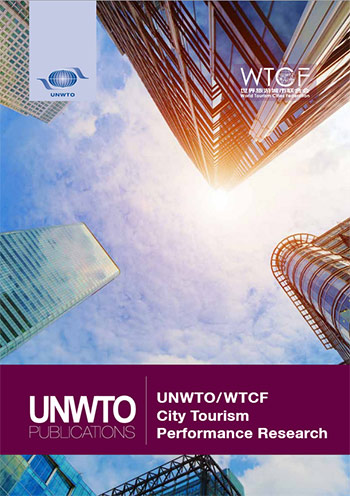
UN Tourism-WTCF City Tourism Performance Research
The UN Tourism/WTCF City Tourism Performance Research brings forward an analysis and evaluation of success stories in urban destinations. The results were collected by experts who applied the methodology created for the initiative through the realization of field visits and interviews of local tourism authorities and the main stakeholders. The publication based on case studies from 15 cities, provides in-depth understanding of each individual city and has the objective to enable other cities to learn from the progress they have achieved in order to enhance their performance, competitiveness and sustainability.

‘Overtourism’? – Understanding and Managing Urban Tourism Growth beyond Perceptions
The management of tourism flows in cities to the benefit of visitors and residents alike is a fundamental issue for the tourism sector. It is critical to understand residents’ attitude towards tourism to ensure the development of successful sustainable tourism strategies. This report analyzes the perception of residents towards tourism in eight European cities – Amsterdam, Barcelona, Berlin, Copenhagen, Lisbon, Munich, Salzburg and Tallinn – and proposes 11 strategies and 68 measures to help understand and manage visitor’s growth in urban destinations. The implementation of the policy recommendations proposed in this report can advance inclusive and sustainable urban tourism that can contribute to the New Urban Agenda and the Sustainable Development Goals.
‘Overtourism’? – Understanding and Managing Urban Tourism Growth beyond Perceptions. Volume 2: Case Studies

This second volume includes 18 case studies across the Americas, Asia and the Pacific and Europe – Amsterdam, Antwerp, Barcelona, Berlin, Besalú, Cambridge, Dubrovnik, Edinburgh, Ghent, Hangzhou, London, Lucerne, Macao (China), New York, Lisbon, Seoul, Porto, Prague and Venice – on how cities are implementing the following eleven strategies: 1. Promote the dispersal of visitors within the city and beyond; 2. Promote time-based dispersal of visitors; 3. Stimulate new visitor itineraries and attractions; 4. Review and adapt regulation; 5. Enhance visitors’ segmentation; 6. Ensure local communities benefit from tourism; 7. Create city experiences that benefit both residents and visitors; 8. Improve city infrastructure and facilities; 9. Communicate with and engage local stakeholders; 10. Communicate with and engage visitors; and 11. Set monitoring and response measures.
Global survey on the perception of residents towards city tourism: impact and measures

This research is a result of a partnership between the World Tourism Organization (UN Tourism) and IPSOS. To better manage the issues arising from the growing tourism demand in urban destinations it is essential to understand resident's experiences and perceptions on city tourism. The research aims at understanding the perception of residents towards city tourism, its impacts, as well as the most adequate strategies to manage the growing tourism flows in cities.
New Business Models in the Accommodation Industry – Benchmarking of Rules and Regulations in the Short-term Rental Market
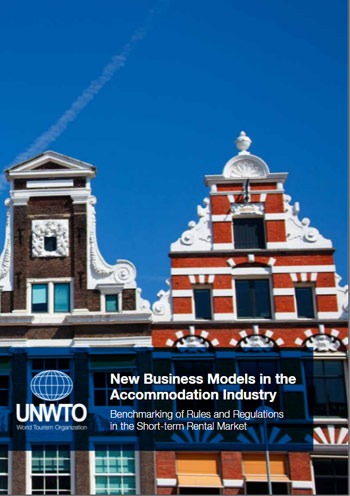
Several factors explain the growth of the so-called “sharing economy” in the tourism sector over recent years, including the 2010 global economic crisis, digitalization and new trends in travellers’ behaviour and preferences. This growth has been particularly notable in the accommodation industry. With the emergence of online platforms for short-term rentals, the market has been expanding at an unprecedented rate.
Building upon UN Tourism’s 2017 publication New Platform Tourism Services (or the so-called Sharing Economy) – Understand, Rethink and Adapt, this report provides an analysis and benchmarking of 21 case studies in terms of the rules and regulations applied to the short-term rental market, focusing on three key areas: 1) fair competition; 2) consumer protection; and 3) planning and sustainability.
- Tianjin Workshop, 2 September 2017
- Buenos Aires Workshop, 26 September 2017

25 TIPS TO EXPLORE AND VISIT A CITY
By Author Katie
Posted on Last updated: September 7, 2022

Ever wandered around a city dazed and lost? These tips will help you explore and visit a city to the max; whether you are new or not!
Feeling dazed and lost around a city is normal for newbies to a place – that was us on our first trip together to New York City . We spent the first day literally wandering around and getting lost, staring at the bright lights and receiving puzzled looks from the fast-paced New Yorkers leaping past us. For our next city break, we were much better prepared so I thought I would share with you some tips on exploring a new city.
How to explore and visit a city

Visit a local market
Find out where the local markets are either before arriving or ask at the hotel and get going. You can learn so much about a place by visiting the local market, trying the local food, and just watching the locals. It can also get you off the beaten track a bit.
Sleep before you arrive
If you are taking a long flight, try and sleep on the flight so that you can get going straight away once you’ve arrived in the city. Also, email your hotel ahead of arrival to try and check in early if you are arriving before 2 pm
Learn basic words and phrases
If you are heading somewhere that speaks a different language then learn or at least make a note on your phone of basic words and phrases you may need to use. When we arrived in Ho Chi Minh City, it took us some time to figure out how to ask the lady at the reception desk where we could get food from at that late hour. I think she thought we were asking for a rest room not a restaurant…
People watching
A fave of mine, when we arrive in a new city (particularly a hot one), it has become a norm of ours to head to a local bar or pub (or cafe if it’s before noon…sometimes), get a seat either outside or one facing the window and just watch the world go by. Obviously, we don’t spend hours doing this but you can learn a lot by taking time before dinner to just relax, drink and watch.

Embrace your inner tourist
Whether you are visiting a city on a trip or you moving somewhere permanently, there is nothing wrong with being a tourist and visiting the tourist traps. There are some bloggers, travelers and travel writers out there who will shun tourist spots and focus on exploring the places less explored. Yeah that is great and we do try and see the less obvious attractions too but actually visiting the Colosseum in Rome, the Great Wall in China , and the Golden Gate Bridge in San Francisco is what makes trips to these places so amazing. Don’t shy away from those busy attractions, there is always a reason those places are busy!
Talk to the locals
Alongside visiting those tourist spots, try and talk to locals to get their point of view for interesting things to do in that city. You may find hidden gems or an amazing restaurant – if you do, please share these with us in the comments below!
Take a cooking class
If you are in a city for a while, try your hand at a cooking course. Many courses include trips to local stores or markets whilst also giving you the skills to make and try the local dish. Plus, you can chat and socialize with other travelers and locals; learning more about their way of life and culture.

Eat where the locals eat
Avoid restaurants with tour buses nearby and picture menus, instead visit the restaurants down alleyways or around the corner from popular areas or ask locals where they would recommend. If a local would eat there then it will no doubt be good!
When visiting a city, especially if it isn’t too big, try and find as many opportunities as you can to walk to and from places. It is in these moments that you really get to enjoy and explore what a city has to offer and may even find some great restaurants, bars, and attractions along the way.
This may sound obvious but wear comfortable shoes and clothes! You will be walking a lot so pack clothes that are appropriate for your travel.
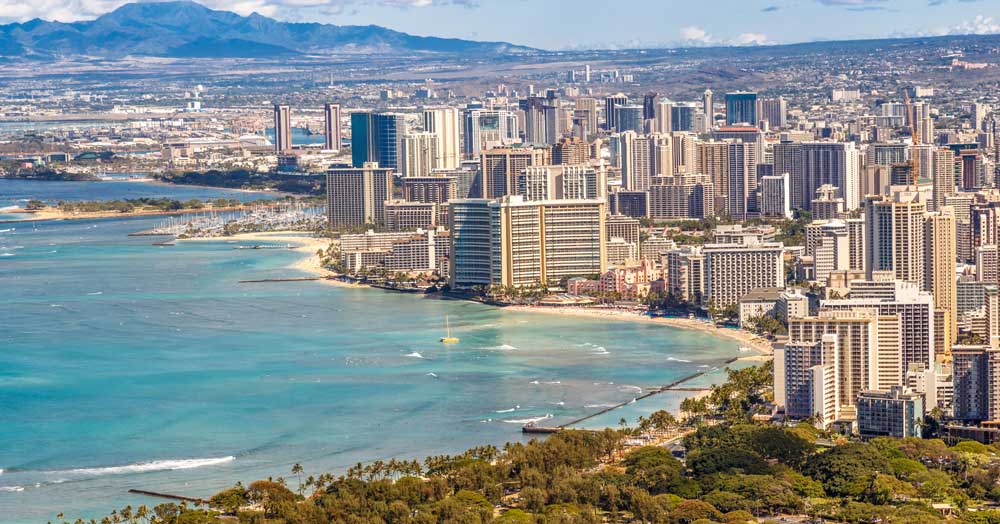
Not that type of drink… well not all day at least. But staying hydrated is of course important all the time, but especially important when walking around a city.
I don’t know about you but I find that a busy city can be very dry and leave me with dry skin and hair. Bring some moisturize with you and lather up every evening before bed.
Don’t over plan
Before leaving, use blogs, youtube, and trip advisor to plan what you want to see and do and work out which attractions are near one another. But don’t expect to see the Top 20 things to do in NYC in just 4 days…it won’t happen. Prioritize and make yourself a rough plan.
Plan an extra day
If time and money permit, try and plan an extra day. You will always realise there is something else you want to explore and see and that extra day will give you a chance to explore at your own pace and find time to relax.
In honesty, we are guilty of being those people who have occasional lie-ins during our trip and end up missing something we wanted to see. Not anymore I tell you! When traveling for long periods of time then lying in at times is fine but if you are only in a city for a few days then get yourself up bright and early! Aim to leave by 8am so you can make the most of your day and don’t you dare head back to your hotel until at least 10pm.
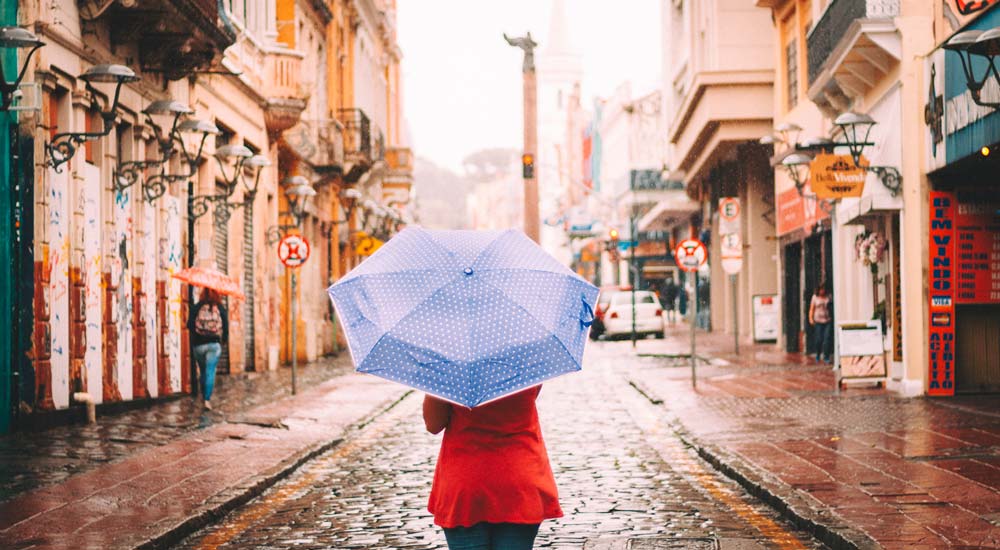
Photograph it
Make sure you take photos of your adventures whilst you enjoy them. They make for great memories and we would love to see them so do share them on Instagram! That being said, take the photographs for you and not for Facebook… I know I have annoyed many friends by uploading day-by-day piccies of our travels and as much as I may love to stalk my friends’ travels abroad, not everyone loves hundreds of pictures filling up their news feed.
You are on holiday and no matter how much you want to see, you must find time to relax! Whether its taking time for a shopping trip, heading to a show or visiting a spa; find time to unwind. Calum and I will spend all day exploring but then settle in a restaurant and/or bar in the evening, have a few drinks and chat about the day.
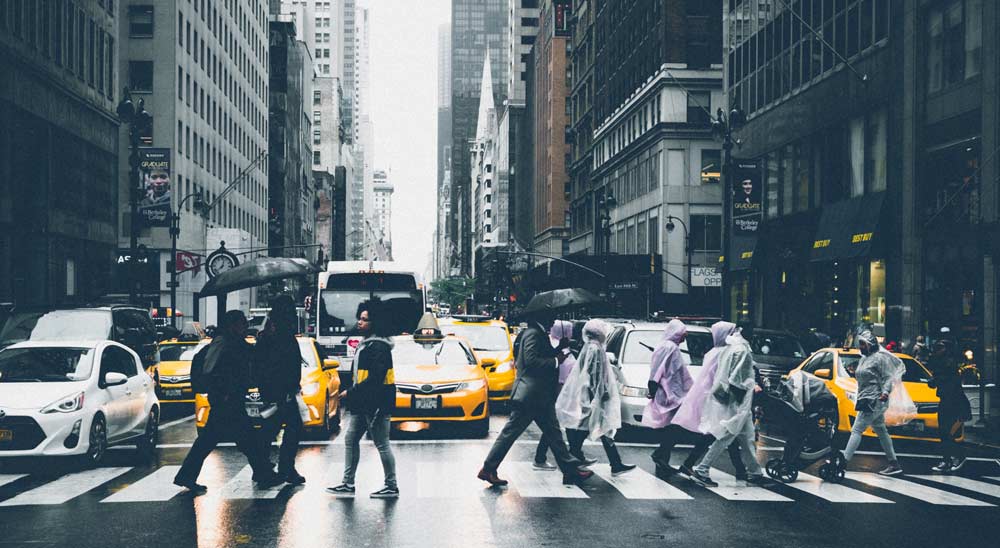
Follow bloggers
OK so this one may be biased but I wouldn’t have seen and done half as much as I have done in new cities if it wasn’t for the advice given by travel bloggers. Have a search online and see which bloggers have been to your chosen city and use their advice! Of course, feel free to subscribe to Creative Travel Guide but also check out Alex in Wanderland , migrationology.com , Camels and Chocolate , Never Ending footsteps , Practical Wanderlust and the list goes on. These are the bloggers who have helped me with our travel plans. – Thanks!
Try a city bus
If you are short on time, then hop on a city bus. These are great for getting around a new city, showing you all the attractions and giving you the chance to hop off and explore at your own pace.
Bring a day bag
You will be exploring the city most of the day so make sure you bring a large enough bag to carry essentials (water, camera, purse, phone, map, hotel keys, umbrella, etc).
See it from high
Every city has a tall building in it somewhere. Find it and go up it! Not only is the experience itself a great one but the view can give you a whole new perspective on a city. The Eiffel Tower showed me how massive Paris actually is whilst the Sky Bar of Bangkok offers a different way of life to that on ground level.
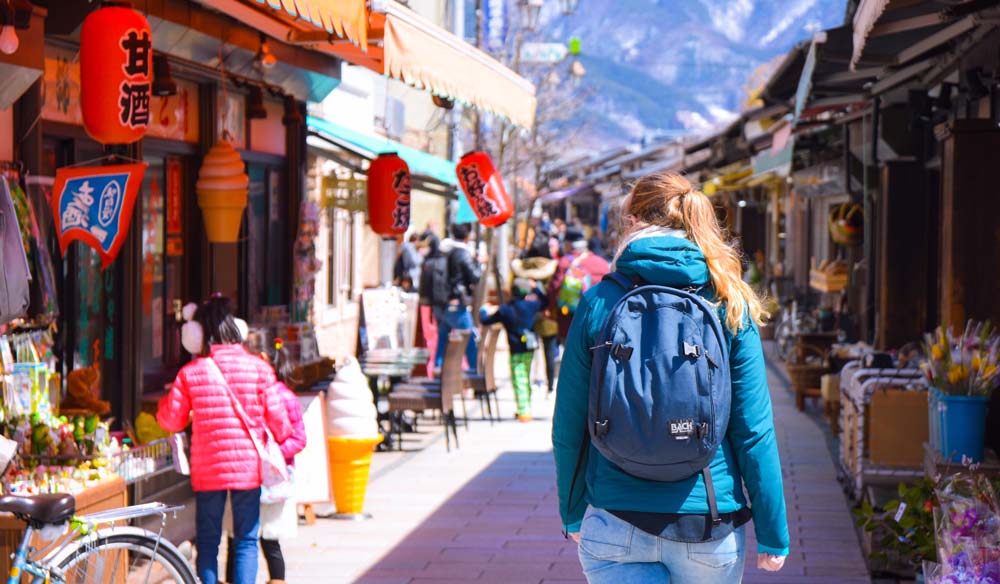
Free Walking Tours
Many cities around the world offer some form of free walking tour. Have a google and sign up so you can see the city whilst mingling with locals.
So I know I complained about getting lost at the beginning of this blog but sometimes getting lost in a new city can be just what you need. Whilst in Tokyo we found ourselves lost and ended up somehow inside a gaming company that Calum loves and whilst in Paris, we found an adorable boutique restaurant that had cheap(ish) wine and beer.
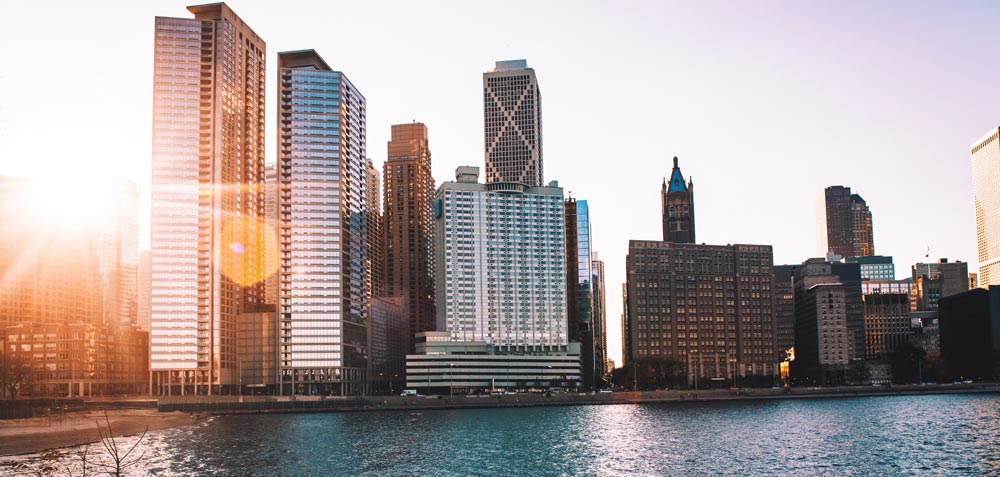
Either download a map on your phone, ask at your hotel or nab one from a tourist stand but make sure you have a map. Exploring a new city can be tiring especially when you walk 30 minutes in the wrong direction – not that we are talking from experience!
UNESCO sites
From my experience, UNESCO sites are always interesting and worth a visit. If your chosen city has any UNESCO sites, try to find some time to visit them.
These are some tips that we use to get use to and explore a new city.
How do you explore a new city?! Share your tips and suggestions in the comments below!
This site uses Akismet to reduce spam. Learn how your comment data is processed .
Rejuvenating Journeys: Transforming Life in a New City – Moving you faster and safer to home
Monday 20th of November 2023
[…] the spirit of exploration can transform the experience of moving to a new city. Discovering local attractions, indulging in regional cuisine, and participating in cultural activities can be thrilling. This […]
Sights to See When Traveling in London | wyoming healthcare commission
Wednesday 28th of June 2023
[…] One mistake that travelers often make is trying to see everything in London in one busy week. Plan on a minimum of three days for your first visit and be sure to book your sightseeing experiences and visits in advance. This way, you can avoid long queues and spend more time actually exploring the city. […]
A Fresh Start: Moving to a New City After a Low Point by Karyn Winrich (financial literacy info) - Shippy Realty
Thursday 2nd of March 2023
[…] all that your new city has to offer by visiting local attractions such as parks or museums; trying out restaurants; attending sporting events; checking out farmers […]
Exploring The Undergrounds Of New York La Metro London Tfldeighton
Wednesday 8th of February 2023
[…] navigate. With frequent stations and short journey times, the London Underground is a great way to explore the city. Whether you’re a tourist or a local, the Underground is a great way to get around London […]
Top Advantages of Becoming a Courier - Heritage Town
Tuesday 15th of November 2022
[…] involved in a career as a courier is that you have the opportunity to drive around different areas, exploring them and discovering more about them along the way. There is no doubt that there are a lot of people out […]
- Original Article
- Open access
- Published: 12 December 2015
The changing nature of city tourism and its possible implications for the future of cities
- Kerstin Bock 1
European Journal of Futures Research volume 3 , Article number: 20 ( 2015 ) Cite this article
47k Accesses
50 Citations
19 Altmetric
Metrics details
City tourism is one of the fastest growing travel segments worldwide [ 18 ] and the changing nature of city tourism becomes increasingly apparent in many cities. Facilitated by mobile access to information, tourists are increasingly seeking, finding and consuming ‘local experiences’ and the boundaries between tourists and residents become increasingly blurred. While the impact of the proliferation of information and communication technologies (ICTs) on the travel industry as well as on tourist behaviour and the travel experience has been widely acknowledged (Egger J Hosp Tour Technol 4(2): 119–133, 2013 ), (McCabe et al. Tour Manage Perspect 4: 36–44, 2012 ), (Stamboulis and Skayannis Tour Manage 24: 35–43, 2003 ), [ 35 , 40 ], (Ye et al. Comput Hum Behav 27: 634–639, 2011 ), the implications of this new type of tourism for future urban development have received little attention (Füller and Michel Int J Urban Regional 38(4): 1304–1318, 2014 ). This paper aims to better understand the underlying causes of the changing nature of city tourism and how this change could impact the future development of cities. It is argued that in addition to the proliferation of ICTs, the phenomena of experiential travel and social acceleration have contributed to the rise in popularity of city tourism as well as to a change in tourist behaviour. Possible implications for the future development of cities resulting from this new type of tourism, as well as approaches to solving those challenges, are discussed. It becomes clear that an interdisciplinary approach will be required in order to fully understand the challenges posed by city tourism as well as to develop and implement strategies for a successful integration of tourism into future urban development.
Introduction
Although cities and their development have without doubt been increasingly shaped by tourism in the past decades, discussions of the links between city tourism and its impact on a city’s development remain scarce. City tourism is one of the fastest growing travel segments worldwide [ 18 ] and the impacts of the changing nature of city tourism become increasingly apparent in many cities. The proliferation of information and communication technologies (ICTs) has had a significant impact on the travel industry, as well as on tourist behaviour, and is also transforming the nature of travel and the actual tourist experience [ 9 , 22 ].
While the general impact of ICTs on the travel industry and tourist behaviour has been widely acknowledged [ 9 , 19 , 30 , 35 , 40 , 41 ], an understanding of the impact of ICTs on the nature of city tourism, and consequently on urban transformation and the future development of cities, has received little attention [ 13 ]. As travel experiences become increasingly dominated by ICTs, a change in travel behaviour can be observed in cities around the world. Therefore, the aim of this paper is to examine the changing nature of city tourism, as well as the underlying causes of this change, by means of a literature review. Moreover, possible consequences of this phenomenon for the future development of cities will be delineated.
The first part of this paper provides a brief overview of the growth of city tourism and discusses possible reasons for the popularity of this type of tourism. Then, the changing nature of city tourism will be explored by focusing on the effects of the proliferation of ICTs on travel behaviour as well as on the phenomena of experiential travel and social acceleration. Based on these considerations, some of the challenges that city tourism and the changing tourist behaviour pose to the future of cities, and possible implications, will be discussed. This is followed by an outlook for the future of city tourism as well as by exploring possible approaches to solving challenges resulting from this new type of tourism.
- City tourism
The rise of city tourism
More than half of the world’s population lives in cities today and by 2030 an estimated five billion people will live in urban areas. As vibrant epicentres of culture and commerce, some of the world’s greatest tourism destinations are cities, attracting a growing number of visitors every year [ 37 ]. According to the United Nations World Tourism Organization (UNWTO), city tourism - also referred to as urban tourism - is considered as “trips taken by travellers to cities or places of high population density. The duration of these trips is usually short (one to 3 days)…” [UNWTO, 2012, cited in : 36:8][ 36 ].
While total international tourist arrivals are increasing year on year, different trends regarding different segments and types of trips can be observed. According to Euromonitor International [ 12 ], international tourist arrivals have increased by 4.8 % in 2013, while the world’s 100 leading cities in terms of international tourist arrivals have experienced a growth of 5.4 % in the same year. Although these growth figures include different trip purposes, including business trips, a rise in city tourism can also be observed when looking at holiday segments. While sun & beach holidays have grown by 31 % over the last 5 year period (representing 29 % of all holiday trips), the segment of touring holidays has grown by 28 % (to reach a 23 % share). The city trips segment, however, has increased by 72 % during the past 5 years to reach a share of 21 % [ 18 ]. In some countries, city trips have already overtaken sun & beach holidays as the most popular type of holidays. For example, 42 % of British people took a city break holiday in 2014, compared to 38 % who went on a sun & beach holiday in the same year [ 1 ].
In order to understand the implications for the future of cities, it is important to also look at the development of city trips from a city’s perspective. Using Barcelona and Berlin as examples, the enormous growth some cities have experienced in terms of tourist arrivals since 1990 can be illustrated. Arrivals in hotels and similar accommodation establishments in the city area of Barcelona have grown from 1.7 million in 1990 to 7.5 million in 2013. In the city area of Berlin, arrivals in all paid forms of accommodation establishments have increased from 2.8 million in 1990 to 11.3 million in 2013 [ 32 ]. What implications this growth already has on cities today, and what they might be in the future, will be discussed in more detail later. In the following section, some of the reasons for the popularity of city tourism will be explored.
The popularity of city tourism
What makes city tourism distinct from other types of tourism is that cities have a high density of diverse cultural offerings in a relatively small area, attracting different types of tourists. Moreover, most attractions and amenities tourists are drawn to have not been primarily intended for tourists, which often leads to an interaction between tourists and locals. As these characteristics of city tourism are not new, the question that arises is why the popularity of city tourism has drastically increased in recent years.
A number of factors may have contributed to the rising popularity of city tourism. Firstly, urbanisation is believed to reinforce the trend towards city tourism as people living in cities are more likely to associate with cities and the more they are inclined to visit other cities [ 37 ]. Secondly, without doubt the proliferation of low cost carriers has had a major impact on the popularity of city trips, mainly due to the fact that they made flights more affordable to the masses, but also because they expanded and improved flight networks, thus offering more city destination options and making them more accessible from a growing number of departure points than in the past, considerably decreasing travel times. As a consequence, this development has made a wide range of cities available to tourists at lower costs [ 8 ]. Thirdly, as the proportion of the population taking several trips per year continues to grow, there is a tendency towards an increasing number of shorter holidays rather than just one main holiday per year [ 8 , 17 , 34 ]. Fourthly, due to the increasing availability and penetration of internet based services during the travel cycle, information can easily be accessed, and the ease of making bookings online, and retrieve a wide range of information while in a destination, has greatly facilitated city tourism. As the biggest proportion in terms of the booking value of a city trip usually consists of the two elements transport and accommodation, it is relatively easy and not as risky to book online as, for example, a multi-country trip, a round trip or even a beach holiday where the hotel is not easily accessible from the airport by public transport. Moreover, as will be discussed in more detail later, the proliferation of ICTs, and in particular of mobile technologies, increasingly empowers consumers to create and plan further components of their city trip while in the destination. Due to the density of cultural offerings, the amount of options to choose from in a city surpasses those of other destination types. Finally, peoples’ perceptions of cities as tourist destinations has been changing. Nowadays, travellers no longer regard a city merely as an entry, exit, or transit point, but as a destination in its own right [ 8 ].
The changing nature of city tourism
The proliferation of icts.
In our increasingly mobile and connected world, devices connected to the internet, and increasingly mobile devices, such as smartphones and tablets, are omnipresent. In terms of both product sales and broadband subscriptions, mobile devices are now outperforming PCs [ 28 ]. According to Ericsson [ 10 ], approximately 90 % of the world’s population will be covered by mobile broadband networks by 2020. Global mobile subscriptions are growing by around 5 % year on year. By 2020, smartphone subscriptions are forecast to have more than doubled and 70 % of the world’s population will own a smartphone [ 10 ]. As a result, mobile devices are set to play an increasingly important role in travel in the years to come [ 28 ].
In the past, ICTs have not only revolutionised the travel industry itself but also the role of consumers, who have acquired greater power thanks to the array of information available and the choices offered by the internet. However, the inexorable rise of the mobile channel and smartphones has triggered a new stage in this development, which is not only expected to have a major impact on the travel industry but also a significant impact on the travel behaviour. While in the past travellers used ICTs for pre-travel and post-travel arrangements, there has been a general shift to using mobile technologies during the travel experience as many travellers are nowadays connected to the internet during all stages of the travel cycle [ 11 , 20 , 42 ].
Smartphone applications provide a wide range of information, such as destination tour guides, language assistants, restaurant and bar finders, information on local transportation, events, etc. Moreover, users interact with each other via social media and provide reviews on places, local attractions, restaurants and bars as well as on accommodation, which in turn are read by tourists deciding on their own travel plans and things to do while in the destination. This results in the mobile internet changing tourists’ behaviour as they are now able to find what they require and when they require it through their mobile devices [ 6 , 19 , 23 ]. More easily available information increases the number and types of experience options a tourist can choose from in a shorter period of time.
While it has to be acknowledged that access to free Wi-Fi is still limited in some destinations, there is a rapid development towards mobile contract providers offering cheaper internet allowances for travellers on the one hand and cheaper or free internet access in hotels, cafes, and even throughout some cities on the other. At the same time, more elaborated apps are being developed for offline use. For example, Google is planning to offer new offline features that will allow navigating around a city in offline mode. Moreover, through Google’s new context-aware service, Now on Tap , tourists will be able to build a temporary offline library with all relevant data and information they would need for a day, for example of where they want to travel and what they are planning to visit. The data download can be completed while the mobile device is connected to free Wi-Fi, for example at the airport, accommodation and other Wi-Fi zones and hotspots and thus, expensive internet fees can be avoided [ 24 ]. According to Tripadvisor [ 34 ], 74 % of global travellers surveyed regarded free in-room Wi-Fi as the most influential amenity when booking accommodation. Furthermore, 87 % of global travellers use mobile devices while travelling, with 61 % of global travellers using social media while on holidays [ 33 ]. With a rapid expansion of the availability of free or cheap Wi-Fi access, the use of mobile internet devices by travellers is set to further increase in the future.
Experiential travel & social acceleration
Nowadays, travellers are increasingly in search for rich and memorable experiences that create value for them and engage them in a personal way. There are two major developments which can currently be observed with regard to the travel experience. The first one is the traditional experience economy being increasingly replaced by the concept of experience co-creation, meaning that consumers are becoming more active in co-creating their experiences. The second one, a more recent development, is that experiences become increasingly dominated by ICTs. As a result of travellers becoming more empowered through the use of technologies during their travels, they themselves can now become the main actor in co-creating richer experiences and additional value [ 21 , 29 ].
Travel is increasingly about how travellers experience destinations viscerally and how experiences change them and their understanding of places. They want to feel inspired by places and their encounters with locals - and they want individual experiences that are entirely their own. This phenomenon is commonly referred to as ‘Experiential Travel’ and is arguably the most significant, systemic trend in global travel. The term typically encompasses the notion of a more immersive, authentic and local and/or active travel experience. While it could be argued that travel is inherently experiential, the significance in this context is the shift towards the mainstream. An increasing number of people want to travel on a deeper emotional and more personal level and are turning their backs on pre-arranged package holidays [ 21 , 29 ].
One reason for the development of this trend might be the sameness of many mainstream travel experiences. Another reason, according to Wong, the founder and CEO of Vayable, an online sharing portal that pairs travellers with its network of local citizens around the globe offering to experience their destination like a local, is the fact that technology, while connecting individuals online, has ironically left people isolated and given individuals a real need for human connection [ 29 ]. While these are plausible reasons for this change in tourist behaviour, it is suggested here that another explanation might lie in the acceleration of society as described by the sociologist Hartmut Rosa [ 25 – 27 ]. In fact, social acceleration may not only explain the shift towards experiential travel and the increased use of internet devices while travelling, but might also offer an explanation for the enormous popularity of city tourism.
Rosa differentiates between three categories of acceleration: technological acceleration, the acceleration of social change, and the acceleration of the pace of life. Technological acceleration is “the speeding up of intentional, goal-directed processes of transport, communication, and production” [ 26 :6]. While technological acceleration could be classified as acceleration processes within society, acceleration of social change can be described as acceleration of society itself. The acceleration of social change is what Rosa describes as the “contraction of the present (Gegenwartsschrumpfung)” [ 26 :7], the present being the time-span for which “the horizons of experience and expectation coincide” [ 26 :7]. Social beliefs and actions have an increasingly shorter period of validity; social change is for example reflected in the stability of social institutions and practices as well as in personal relationships. Finally, the acceleration of the pace of life, which occurs despite the expectation that technological progress increases an individual’s free time, can be defined as the “increase of episodes of action and/or experiences per unit of time as a result of a scarcity of time resources” [ 27 :221].
These three categories of acceleration can be understood as an acceleration cycle: Technological acceleration is almost inevitably linked to a whole range of changes in social practices and communication structures. For example, the internet has not only speeded-up communication processes but also triggered new economic and communicative structures, establishing new patterns of social interaction and thus, driving social change. In a society where accelerated rates of social change affect all spheres of life, individuals develop a feeling of standing on a ‘slippery slope’, a phenomenon that is well known from the realm of capitalist production. Pausing and resting means becoming out-dated and old-fashioned in one’s knowledge and experience. Therefore, in order to avoid the loss of potentially valuable options, individuals feel forced to keep up with the speed of change they experience in their social and technological environment. This social change again leads to an acceleration of the pace of life, which in turn calls for technological acceleration to speed up processes in a repeated attempt to save time [ 26 ].
This acceleration circle that can be observed in Western societies is inextricably linked with the culturally dominant idea of the ‘good life’, according to which life should be conceived as the last opportunity, and one’s time span on earth should be used as intensively and comprehensively as possible. According to this modern ideal, the ‘good life’ is the full life (erfülltes Leben), and one should aspire to enjoy as much as possible of what the world has to offer by realising as many options as possibly realisable - or as Rosa states:
“[t]he idea of the fulfilled life no longer supposes a ‘higher life’ waiting for us after death, but rather consists in realizing as many options as possible from the vast possibilities the world has to offer. To taste life in all its heights and depths and in its full complexity becomes a central aspiration of modern man” [ 26 :13, italics in original].
The acceleration of life can be seen as an attempt to realise as many options as possible in our lifetime. Yet, due to the acceleration cycle’s self-propelling dynamic, this aim can never be fulfilled. For example, the internet not only speeds up communication and information processes, but it also vastly increases our options. We could possibly find more relevant, better or more interesting information if we kept on looking on other websites that might better serve our purpose than merely on the one website we visited in the first place. Consequently, the proportion of realised world options to potentially realisable options decreases; technological acceleration leads to increasing time scarcity [ 26 ]. Moreover, Rosa suggests that as the number of experiences in a given period of time increases, the depth of individual experiences might decrease, which in turn might lead to individuals looking for more ‘extreme’ experiences [ 25 ].
Looking at city tourism through the lens of social acceleration, this type of holiday is arguably the most suitable holiday type when pursuing the ‘good life’ due to the high density and vast number of possible realisable options a city has to offer. ICTs, and especially mobile devices, serve as technological accelerators, through which an increasing number of options can be realised, albeit increasing the rate of potential options at greater speed and thus, decreasing the proportion of realised ‘city options’ to potentially realisable options a city has to offer. As the number of experience episodes increases and the depth of those individual experience episodes decreases, as suggested by Rosa, travellers might look for a different quality of their experiences. The phenomenon of experiential travel might be the manifestation of this search for a different quality of experiences, for a quest for more ‘extreme’ experiences - from one extreme of being a tourist to another extreme of living like a local for a short period of time.
Therefore, it could be suggested that social acceleration could be regarded as both cause and effect of the changing nature of city tourism; a cause because the progress and proliferation of technology might enhance the need for human connection and meaningful experiences while increasing the potential options of experience episodes; and an effect because as a result of these phenomena, the attractiveness of cities as destinations increases due to the multitude of options paired with the opportunity of immersing oneself in meaningful and local experiences for a short period of time. While ICTs could be regarded as facilitators of this change, social acceleration may be a useful framework to understand and analyse the underlying causes as well as the qualitative shift of tourist behaviour, and may even be useful to anticipate tourists’ future needs and behaviours.
Possible implications for the future of cities
Challenges and possible implications of city tourism.
The boundaries between tourists and locals become increasingly blurred. This is because on the one hand the borders between tourists and residents become more difficult to define due to globalisation and changing developments related to the way people work and live. These changes result for example in a rise of long working holidays, medium-term business travel, commuting between two countries, and similar phenomena [ 14 ]. On the other hand the blurring of boundaries occurs because tourists are increasingly blending in with the local population. While in the past tourists mainly frequented tourist hot spots and officially designated tourist attractions, they are increasingly seeking ‘authentic and local experiences’, exploring ordinary but lively and diverse neighbourhoods and visiting cafes, bars and markets that were previously almost exclusively frequented by locals. This results in an interest in the same amenities, entertainment and retail infrastructure that city residents preferably consume. However, as leisure tourists are often not constrained on sleeping hours or spending power to the same extent as local residents, conflicts between tourists and residents increasingly occur in neighbourhoods that, in the past, have not been on the (analogue) tourist map. Causes of conflicts are for example nightly partying tourist crowds in residential areas as well as the transformation of affordable local pubs, grocery stores and markets into hyped, high-priced locations that become unaffordable to many local residents [ 13 ]. Moreover, this kind of development can slowly lead to residential areas losing their unique identity and character due to businesses increasingly adapting their offerings to the lucrative tourist demand, but can also pose development opportunities for deprived areas.
Due to the proliferation of ICTs, the information divide between tourists and locals is slowly dissolving. While in the past residents almost exclusively shared and exchanged information about new restaurants, unique shops, grocery stores and markets as well as about meet-ups and other events through word-of-mouth (offline) with friends, family and other residents, and tourists did not have access to this kind of information, nowadays there is almost a complete information transparency, no longer making any difference between tourist and local resident.
The quest for the authentic is not solely limited to tourist activities but also increasingly affects accommodation choices. Companies providing online platforms that permit the large-scale rental of apartments, rooms and entire properties from one individual to another have become hugely successful in recent years. Often referred to as sharing economy or collaborative consumption , in more general terms this concept involves individuals temporarily renting, or getting access to, goods or services offered by other individuals (peer-to-peer sharing). This new way of sharing and reaching a global audience has been facilitated by the Web 2.0 technology [ 3 , 15 ]. Arguably one of the most prominent - and most successful - companies of the sharing economy is Airbnb. As of August 2015, Airbnb had more than 1.5 million listings in more than 190 countries, and more than 40 million guests had booked their stay through the booking platform [ 2 ], which highlights the business concept’s huge popularity amongst travellers, and even amongst an increasing number of business travellers. It is estimated that Airbnb already accounts for a similar number of room nights as some major hotel brands [ 15 ]. According to Airbnb’s CEO, the company’s goal is to deliver local experiences to its customers, accessible through the internet, and increasingly through mobile devices. In early 2012, Airbnb announced its acquisition of NabeWise, and a few months later the acquisition of Localmind. While NabeWise offers travellers staying with Airbnb information about nearby businesses, Localmind provides information on what is happening in local neighbourhoods. In the same year, Airbnb introduced a new ‘Neighbourhoods’ feature on its website, which is essentially a travel guide that includes advice from hosts and other Airbnb users, helping users of the website and app to decide where to stay and what to visit in order to experience a city ‘like a local’ [ 16 , 31 ].
The company’s enormous success not only highlights changing tourist preferences, but has also implications for cities, their residents and businesses. Not only will traditional accommodation establishments and other businesses be affected by an increasing competition from the sharing economy, but the sharing economy is also increasingly causing fears of gentrification, and particularly of rising rents and property prices, amongst local residents. While there is little evidence to what degree the sharing economy, and tourism in general, is accelerating gentrification processes, in some cities tourists have been blamed for waves of gentrification processes by local residents. In recent years, this resentment towards tourists has become particularly evident in the cities of Barcelona and Berlin. Many of the problems and challenges faced by both cities and their residents are summarised in the documentaries Bye Bye Barcelona [ 4 ] and Welcome Goodbye [ 39 ]. From these documentaries it also becomes evident that often a negatively biased view of tourism exists among city residents. What also becomes clear from having watched these documentaries as well as from having reviewed the literature and having attended presentations and seminars about the topic is that there is a lack of solutions from politicians, tourism businesses and city planners to these challenges.
According to UNWTO projections, international tourist arrivals worldwide are expected to rise from 1.1 billion in 2014 to 1.4 billion by 2020 and to 1.8 billion by the year 2030 [ 38 ]. By 2030, an estimated five billion people will live in urban areas [ 37 ]. Given these two projections and the notion that people who live in cities are more likely to take city trips than people who live outside urban areas, it is very likely that city tourism is going to experience a sharp growth in the future, adding millions of tourists to a growing urban population. Due to the changing nature of city tourism, these tourists are increasingly looking for the same or similar experiences and amenities as local residents and are using to a large extent the same resources as cities’ inhabitants. Therefore, when developing future city plans or city visions, it is important to acknowledge the importance of tourism and to integrate tourism into those plans.
There are going to be enormous challenges to be solved, and if these are not going to be taken seriously by politicians and city planners, a deterioration of the quality of life in many cities might be the inevitable consequence. Already today, the balance between tourists’ and locals’ needs in certain cities - or parts of cities - is not given anymore. For example, in Venice and Barcelona, many parts of the city have undergone a process that could be described as ‘museumisation’. Those parts of the city are being enjoyed and consumed by tourists but can usually not be enjoyed by locals any longer. Due to the changing nature of city tourism as previously discussed, this process of museumisation could be amplified to affect more city locations, that have not been designated or apparent tourist areas in the past, in a shorter period of time than ever before.
As technological developments have facilitated a change in tourist behaviour, technology could also be part of the solution to some challenges city tourism poses to the future of cities. For example, the concept of smart cities - also sometimes referred to as urban informatics - uses ICTs to improve the understanding of peoples’ needs. While the primary goal of smart city projects is to better manage resources and improve residents’ quality of life, smart cities could better manage tourist flows in the future than cities that are not making use of big data in order to plan and manage tourism. This could offer new opportunities to governments and city planners and online data could be used as a digital reflection of physical spaces. For example, the use of GPS information could assist in determining which areas of a city are visited primarily by tourists or locals. Furthermore, city and tourism planners could analyse which places are the most popular - or becoming increasingly popular - by looking at the places’ geotagged information and photos and thus, develop a better understanding of what people appreciate about certain places. This information could also be used to understand and influence behavioural patterns and tourist flows in a city and to spread tourist flows to certain parts of a city [ 5 , 42 ]. In order for these strategies to be successful, it is of paramount importance to involve the local population and businesses, develop an understanding of the importance of keeping tourist streams in balance to avoid a negative impact on the quality of life of residents, and to clearly communicate the benefits that tourism contributes to cities and their residents; not only from a general economic point of view and its export value but also by indirectly supporting the quality of life of locals, for example through the creation of a more diverse cultural offer, improved public transport, regeneration projects, etc. It would go beyond the scope of this paper to explore these options in more detail but it is worth noting that one of the cities introducing new technologies to investigate how to make tourist flows more predictable and manageable is Amsterdam. The city is working on a project aimed at spreading tourist streams to areas that have not typically been visited by tourists in the past by involving the local population, businesses and authorities. It will be interesting to follow this development and to see if Amsterdam could be a model for tourist cities in the future - and other cities should follow soon as long-term planning is of vital importance. For example, with projects like the deviation of visitor streams it might take between 8 and 12 years until changes become visible [ 7 ]. Given the importance of solving the challenges discussed in this paper, research into urban development should try to better understand new developments in tourism in order to be able to plan for cities of the future.
The aim of this paper was to examine the changing nature of travel behaviour in cities, as well as causes of this change, and to delineate possible consequences of this phenomenon for the future development of cities. For this purpose, possible causes of a change in tourist behaviour have been explored, mainly by examining the proliferation of ICTs as well as the phenomenon of experiential travel. Moreover, it was discussed if social acceleration could offer an additional explanation for the underlying causes of the rising popularity and changing nature of city tourism. While ICTs could be considered as facilitators of a change in tourist behaviour, the phenomenon of social acceleration may be a useful framework to understand the underlying causes as well as the qualitative shift of tourist behaviour, and may even be useful to anticipate future tourist behaviour.
It became clear that due to a change in tourist behaviour, the boundaries between tourists and residents become more and more blurred. Facilitated by mobile access to information while travelling, tourists are increasingly seeking, and finding, more authentic experiences and are looking for ways to experience cities like locals do; they increasingly want to live like a local for the duration of their trip. This has several implications for cities and is going to become even more important as the segment of city tourism is set to significantly increase in the future. While in the academic literature little attention has been paid to the challenges that many cities will have to face in the future, some city and tourism authorities have started to recognise these, and to develop solutions.
Due to the limited scope of this paper, various aspects related to this field of research could not be fully examined and pose a limitation to discussing this topic to a greater extent. The following examples are merely a fraction of topics that should be addressed in the future in order to gain a better understanding of the subject.
Firstly, it would be important to gain a better understanding of views and attitudes of local residents towards tourists and of how those views are changing over time in different cities. More research is also required into how residents can successfully be involved in tourism planning projects and how an awareness of tourism’s benefits can positively influence locals’ attitudes. Secondly, a better understanding of the extent to which tourism contributes to the process of gentrification is required but also an understanding of how tourism can be used to develop deprived areas and enhance the quality of life for residents. Thirdly, a detailed understanding of why tourists are drawn to certain areas and locations and not to others, how meanings of places are being created and are changing over time, and of the role of technology during these processes would be important for future research. Fourthly, differences in tourist behaviour, for example by global region, age, income, etc. should be looked at in greater detail. If links between behavioural patterns and other variables could be established, this might help to better anticipate tourist behaviour in the future. Fifthly, it is of vital importance to establish viable future options for destinations with confined space, such as Venice or Vatican City. Moreover, a comprehensive analysis of best practice examples of city tourism strategies around the globe as well as a detailed review of existing and emerging technologies that could play an important role with regard to city tourism could help cities to better plan and prepare for the future. In order to fully understand the future challenges of city tourism as well as possible implications for the future of cities, and to successfully develop and implement strategies, an interdisciplinary approach will be required.
ABTA (2014) The consumer holiday trends report - ABTA consumer survey 2014 [pdf] London: ABTA Ltd. Available at: https://c0e31a7ad92e875f8eaa-5facf23e658215b1771a91c2df41e9fe.ssl.cf3.rackcdn.com/publications/1420_ABTA_Consumer_Survey_2014_WEB.pdf . Accessed: 4 Aug 2015
Airbnb (2015) About Us. [Online] Available at: https://www.airbnb.co.uk/about/about-us . Accessed 21 Aug 15
Belk R (2014) You are what you can access: Sharing and collaborative consumption online. J Bus Res, 1595–1600
Bye Bye Barcelona (2014) Directed by Eduardo Chibás Fernández [Film]. Spain
Cisco (2014) Smart city infrastructure is helping Europe’s cities better understand and serve tourists. [ONLINE] Available at: http://newsroom.cisco.com/press-release-content?type=webcontent&articleId=1488545 . Accessed 07 Aug 15
Dickinson JE, Ghali K, Cherrett T, Speed C, Davies N, Norgate S (2014) Tourism and the smartphone app: capabilities, emerging practice and scope in the travel domain. Curr Issues Tour 17(1):84–101
Article Google Scholar
Dominicus H (2014) Future of city tourism conference: welcome & session one - importance of tourism to cities. [Online] Available at: https://www.youtube.com/watch?v=tYLeI_SU2Zo . Accessed 17 Aug 15
Dunne G, Flanagan S, Buckley J (2010) Towards an understanding of international city break travel. Int J Tour Res 12:409–417
Google Scholar
Egger R (2013) The impact of near field communication on tourism. J Hosp Tour Technol 4(2):119–133
Ericsson (2015) Ericsson Mobility Report - On the Pulse of the Networked Society, June 2015. [pdf] Stockholm: Ericsson. Available at: http://www.ericsson.com/res/docs/2015/ericsson-mobility-report-june-2015.pdf . Accessed: 16 July 2015
Eriksson N (2015) Travellers’ intended future trip arrangement strategies for things to do during a trip: implications for travel distribution. In: Tussyadiah I, Inversini A (eds) Information and Communication Technologies in Tourism 2015: Proceedings of the International Conference in Lugano, Switzerland, February 3–6, 2015. Springer International Publishing
Euromonitor International (2015) Top 100 City Destinations Ranking [Online] Available at: http://blog.euromonitor.com/2015/01/top-100-city-destinations-ranking.html . Accessed 04 Aug 15
Füller H, Michel B (2014) ‘Stop being a tourist!’ New dynamics of urban tourism in Berlin-Kreuzberg. Int J Urban Regional 38(4):1304–1318
Gibson C (2009) Geographies of tourism: critical research on capitalism and local livelihoods. Prog Hum Geogr 33(4):527–534
Guttentag D (2013) Airbnb: disruptive innovation and the rise of an informal tourism accommodation sector. Current Issues in Tourism, 1–26
Hempel J (2012) With neighborhoods, Airbnb expands its horizons. Fortune. [Online] 13 November. Available at: http://fortune.com/2012/11/13/with-neighborhoods-airbnb-expands-its-horizons/ . Accessed 20 Aug 15
IPK International (2013) ITB World Travel Trends Report, December 2013. Prepared by IPK International on behalf of ITB Berlin [pdf] Munich. IPK International. Available at: http://www.itb-berlin.de/media/itb/itb_dl_all/itb_presse_all/WTTR_Report_2014_Web.pdf . Accessed: 4 Aug 2015
IPK International (2015) Tourismus als globaler Wachstumstreiber. Press Release at ITB Berlin, 4. März 2015
McCabe S, Sharples M, Foster C (2012) Stakeholder engagement in the design of scenarios of technology-enhanced tourism services. Tour Manage Perspect 4:36–44
Minazzi R, Mauri AG (2015) Mobile technologies effects on travel behaviours and experiences: a preliminary analysis. In: Tussyadiah I, Inversini A (eds) Information and Communication Technologies in Tourism 2015: Proceedings of the International Conference in Lugano, Switzerland, February 3–6, 2015. Springer International Publishing
Neuhofer B, Buhalis D (2013) Technology Enhanced Tourist Experiences: a holistic exploration of how technology can enhance tourist experiences [Online] Available at: http://blogs.bournemouth.ac.uk/etourismlab/?s=enhanced . Accessed 21 July 15
Neuhofer B, Buhalis D, Ladkin A (2015) Technology as a catalyst of change: enablers and barriers of the tourist experience and their consequences. In: Tussyadiah I, Inversini A (eds) Information and Communication Technologies in Tourism 2015: proceedings of the International Conference in Lugano, Switzerland, February 3–6, 2015. Springer International Publishing
Ohta M, Watanabe Y, Miyazaki T (2015) Spatiotemporal analysis of rambling activities: approach to inferring visitor satisfaction. In: Tussyadiah I, Inversini A (eds) Information and Communication Technologies in Tourism 2015: proceedings of the International Conference in Lugano, Switzerland, February 3–6, 2015. Springer International Publishing
Pulvirent S (2015) Google maps is adding search and directions for offline use. [Online] Available at: http://skift.com/2015/05/29/google-maps-is-adding-search-and-directions-for-offline-use/ . Accessed 21 Aug 15
Rosa H (1999) Rasender Stillstand? Individuum und Gesellschaft im Zeitalter der Beschleunigung. In: Manemann J (ed.) Jahrbuch Politische Theologie, Bd. 3: Befristete Zeit, Münster, pp. 151–176
Rosa H (2003) Social acceleration: ethical and political consequences of a desynchronized high-speed society. Constellations 10(1):3–33
Rosa H (2015) Social acceleration: a new theory of modernity. Columbia University Press, Chichester
Rossini A (2014) The rise of mobile to drive bookings of in-destination services. [Online] Available at: http://www.tnooz.com/article/mobile-bookings-in-destination-services/ . Accessed 27 July 15
Skift and Peak (2014) The rise of experiential travel, Skift report 2014 [pdf] Available at: http://skift.com/wp-content/uploads/2014/06/skift-peak-experiential-traveler-report1.pdf . Accessed: 3 July 2015
Stamboulis Y, Skayannis P (2003) Innovation strategies and technology for experience-based tourism. Tour Manage 24:35–43
Thomas O (2012) Airbnb is turning itself into a local-business guide, Business Insider. [Online] 13 December. Available at: http://www.businessinsider.com/airbnb-local-business-localmind-nabewise-acquisition-2012-12?IR=T . Accessed 20 Aug 15
TourMIS (2014) Overnight stays in European Cities [Online] Available through the Austrian National Tourist Office. Available at: http://www.tourmis.info/index_e.html . Accessed 12 Aug 2014
Tripadvisor (2013) TripBarometer Mobile & Social Survey Finds 85 % of US Travelers Bring Their Smartphones on Vacation & 61 % Report Using Social Media While Traveling. [Online] Available at: http://www.tripadvisor.com/TripAdvisorInsights/n2006/tripbarometer-mobile-social-survey-finds-85-us-travelers-bring-their-smartphones-vacation-61-report . Accessed 23 Aug 15
Tripadvisor (2015) TripBarometer 2015: Five key traveler trends. [Online] Available at: http://www.tripadvisor.com/TripAdvisorInsights/n2582/tripbarometer-2015-five-key-traveler-trends . Accessed 23 Aug 15
Tussyadiah I, Inversini A (eds.) Information and communication technologies in tourism 2015: proceedings of the international conference in Lugano, Switzerland, February 3–6, 2015. DEU: Springer International Publishing, Cham
UNWTO (2012) Global Report on City Tourism. AM Reports, Volume Six [pdf] Madrid: UNWTO. Available at: http://dtxtq4w60xqpw.cloudfront.net/sites/all/files/pdf/am6_city_platma.pdf . Accessed: 3 Aug 2015
UNWTO (2014) Global benchmarking for city tourism measurement. AM Reports, Volume Ten [pdf] Madrid: UNWTO. Available at: http://www.e-unwto.org/doi/pdf/10.18111/9789284416691 . Accessed: 3 Aug 2015
UNWTO (2015) UNWTO Tourism Highlights 2015 Edition. [pdf] Madrid: UNWTO. Available at: http://www.e-unwto.org/doi/pdf/10.18111/9789284416899 . Accessed: 5 Aug 2015
WELCOME GOODBYE (2014) Directed by Nana A.T. Rebhan [Film]. Germany
Xiang Z, Wang D, O’Leary JT, Fesenmaier DR (2014) Adapting to the Internet: trends in travelers’ use of the web for trip planning. J Travel Res, 1–17. doi: 10.1177/0047287514522883
Ye Q, Law R, Gu B, Chen W (2011) The influence of user-generated content on traveler behavior: an empirical investigation on the effects of e-word-of-mouth to hotel online bookings. Comput Hum Behav 27:634–639
Zimmerman C, Hansen K, Vatrapu R (2014) A theoretical model for digital reverberations of city spaces and public places. Int J Electron Gov Res 10(1):46–62
Download references
Author information
Authors and affiliations.
Department of Futures Research, Faculty of Education and Psychology, Freie Universität Berlin, Berlin, Germany
Kerstin Bock
You can also search for this author in PubMed Google Scholar
Corresponding author
Correspondence to Kerstin Bock .
Rights and permissions
Open Access This article is distributed under the terms of the Creative Commons Attribution 4.0 International License (http://creativecommons.org/licenses/by/4.0/), which permits unrestricted use, distribution, and reproduction in any medium, provided you give appropriate credit to the original author(s) and the source, provide a link to the Creative Commons license, and indicate if changes were made.
Reprints and permissions
About this article
Cite this article.
Bock, K. The changing nature of city tourism and its possible implications for the future of cities. Eur J Futures Res 3 , 20 (2015). https://doi.org/10.1007/s40309-015-0078-5
Download citation
Received : 31 October 2015
Accepted : 25 November 2015
Published : 12 December 2015
DOI : https://doi.org/10.1007/s40309-015-0078-5
Share this article
Anyone you share the following link with will be able to read this content:
Sorry, a shareable link is not currently available for this article.
Provided by the Springer Nature SharedIt content-sharing initiative
- Tourist behaviour
- Experiential travel
- Social acceleration
- Information and communication technologies (ICTs)
- Urban development
- Car Rentals
- Airport Transfers
- Attractions & Tours
- Bundle & Save
- Destinations
- Trip.com Rewards
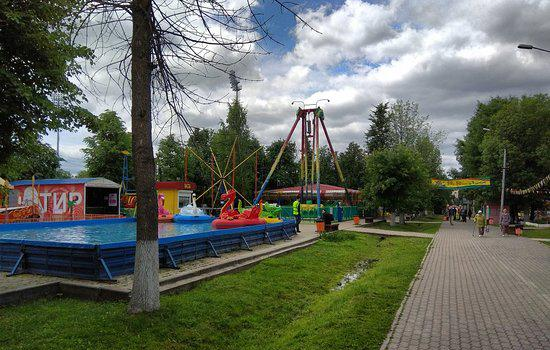
Elektrostal'

Elektrostal' Travel Guide
Experience elektrostal'.
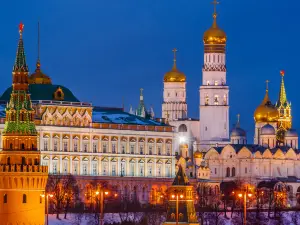
The Moscow Kremlin

Krasnaya ploshchad'

State Historical Museum
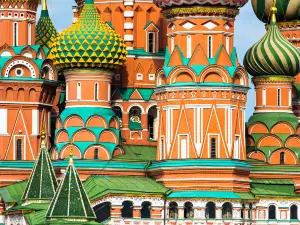
St. Basil's Cathedral

Great Moscow State Circus
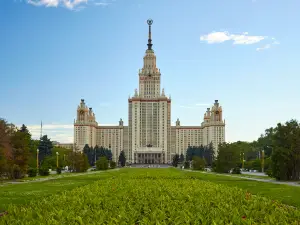
Moscow State University
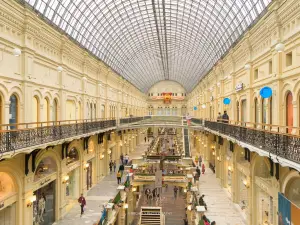
Moscow Metro
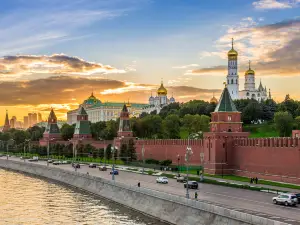
Moskva River

Arbat Street
Where to stay, hotel pioner, yahonty noginsk, house in pushkino, gostinyi dvor hotel, recreation center dubki, yakhontovy les apartments, sloboda na klyazme, what to eat.

Cafe Vostochny Express

Kroshka Kartoshka

Coffee Shop Usy Teodora Glagoleva

Fabrika Obedov

Beer Club Tolsty Medved

Cafe Antresole

Quest-Cafe 4 Komnaty

Prima Bolshogo
Other recommended cities.
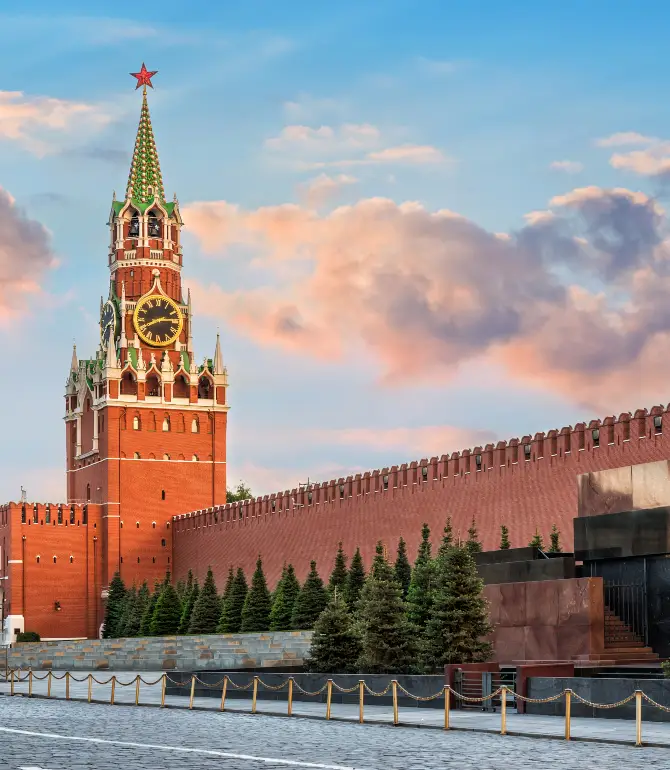
Popular Types of Attractions in Elektrostal'
Popular attractions in elektrostal', popular restaurants in elektrostal', popular destinations, recommended attractions at popular destinations, more things to do in elektrostal'.
- Customer Support
- Service Guarantee
- More Service Info
- Website Feedback
- About Trip.com
- Terms & Conditions
- Privacy Statement
- About Trip.com Group
Other Services
- Investor Relations
- Affiliate Program
- List My Property
- Become a Supplier
LOS ANGELES CITY TOURISM DEPARTMENT
The Los Angeles City Tourism Department (CTD) is responsible for tourism policy, strategic planning for tourism and oversight of external partnerships for the purpose of increasing the competitiveness of Los Angeles as a convention and tourist destination. CTD helps the City maximize the economic benefits derived from out-of-town visitors whose spending contributes to the growth of the local economy.
CTD oversees two important public-private partnerships – one with the Los Angeles Tourism & Convention Board for destination marketing and the other with ASM Global for management of the Convention Center.
OUR TOURISM AND CONVENTION PARTNERS


Turn Your Curiosity Into Discovery
Latest facts.
13 Facts About Brain Tumor Awareness Month US May
13 Facts About Community Garden Week Apr 1st To Apr 7th
40 facts about elektrostal.
Written by Lanette Mayes
Modified & Updated: 02 Mar 2024
Reviewed by Jessica Corbett

Elektrostal is a vibrant city located in the Moscow Oblast region of Russia. With a rich history, stunning architecture, and a thriving community, Elektrostal is a city that has much to offer. Whether you are a history buff, nature enthusiast, or simply curious about different cultures, Elektrostal is sure to captivate you.
This article will provide you with 40 fascinating facts about Elektrostal, giving you a better understanding of why this city is worth exploring. From its origins as an industrial hub to its modern-day charm, we will delve into the various aspects that make Elektrostal a unique and must-visit destination.
So, join us as we uncover the hidden treasures of Elektrostal and discover what makes this city a true gem in the heart of Russia.
Key Takeaways:
- Elektrostal, known as the “Motor City of Russia,” is a vibrant and growing city with a rich industrial history, offering diverse cultural experiences and a strong commitment to environmental sustainability.
- With its convenient location near Moscow, Elektrostal provides a picturesque landscape, vibrant nightlife, and a range of recreational activities, making it an ideal destination for residents and visitors alike.
Known as the “Motor City of Russia.”
Elektrostal, a city located in the Moscow Oblast region of Russia, earned the nickname “Motor City” due to its significant involvement in the automotive industry.
Home to the Elektrostal Metallurgical Plant.
Elektrostal is renowned for its metallurgical plant, which has been producing high-quality steel and alloys since its establishment in 1916.
Boasts a rich industrial heritage.
Elektrostal has a long history of industrial development, contributing to the growth and progress of the region.
Founded in 1916.
The city of Elektrostal was founded in 1916 as a result of the construction of the Elektrostal Metallurgical Plant.
Located approximately 50 kilometers east of Moscow.
Elektrostal is situated in close proximity to the Russian capital, making it easily accessible for both residents and visitors.
Known for its vibrant cultural scene.
Elektrostal is home to several cultural institutions, including museums, theaters, and art galleries that showcase the city’s rich artistic heritage.
A popular destination for nature lovers.
Surrounded by picturesque landscapes and forests, Elektrostal offers ample opportunities for outdoor activities such as hiking, camping, and birdwatching.
Hosts the annual Elektrostal City Day celebrations.
Every year, Elektrostal organizes festive events and activities to celebrate its founding, bringing together residents and visitors in a spirit of unity and joy.
Has a population of approximately 160,000 people.
Elektrostal is home to a diverse and vibrant community of around 160,000 residents, contributing to its dynamic atmosphere.
Boasts excellent education facilities.
The city is known for its well-established educational institutions, providing quality education to students of all ages.
A center for scientific research and innovation.
Elektrostal serves as an important hub for scientific research, particularly in the fields of metallurgy, materials science, and engineering.
Surrounded by picturesque lakes.
The city is blessed with numerous beautiful lakes, offering scenic views and recreational opportunities for locals and visitors alike.
Well-connected transportation system.
Elektrostal benefits from an efficient transportation network, including highways, railways, and public transportation options, ensuring convenient travel within and beyond the city.
Famous for its traditional Russian cuisine.
Food enthusiasts can indulge in authentic Russian dishes at numerous restaurants and cafes scattered throughout Elektrostal.
Home to notable architectural landmarks.
Elektrostal boasts impressive architecture, including the Church of the Transfiguration of the Lord and the Elektrostal Palace of Culture.
Offers a wide range of recreational facilities.
Residents and visitors can enjoy various recreational activities, such as sports complexes, swimming pools, and fitness centers, enhancing the overall quality of life.
Provides a high standard of healthcare.
Elektrostal is equipped with modern medical facilities, ensuring residents have access to quality healthcare services.

Home to the Elektrostal History Museum.
The Elektrostal History Museum showcases the city’s fascinating past through exhibitions and displays.
A hub for sports enthusiasts.
Elektrostal is passionate about sports, with numerous stadiums, arenas, and sports clubs offering opportunities for athletes and spectators.
Celebrates diverse cultural festivals.
Throughout the year, Elektrostal hosts a variety of cultural festivals, celebrating different ethnicities, traditions, and art forms.
Electric power played a significant role in its early development.
Elektrostal owes its name and initial growth to the establishment of electric power stations and the utilization of electricity in the industrial sector.
Boasts a thriving economy.
The city’s strong industrial base, coupled with its strategic location near Moscow, has contributed to Elektrostal’s prosperous economic status.
Houses the Elektrostal Drama Theater.
The Elektrostal Drama Theater is a cultural centerpiece, attracting theater enthusiasts from far and wide.
Popular destination for winter sports.
Elektrostal’s proximity to ski resorts and winter sport facilities makes it a favorite destination for skiing, snowboarding, and other winter activities.
Promotes environmental sustainability.
Elektrostal prioritizes environmental protection and sustainability, implementing initiatives to reduce pollution and preserve natural resources.
Home to renowned educational institutions.
Elektrostal is known for its prestigious schools and universities, offering a wide range of academic programs to students.
Committed to cultural preservation.
The city values its cultural heritage and takes active steps to preserve and promote traditional customs, crafts, and arts.
Hosts an annual International Film Festival.
The Elektrostal International Film Festival attracts filmmakers and cinema enthusiasts from around the world, showcasing a diverse range of films.
Encourages entrepreneurship and innovation.
Elektrostal supports aspiring entrepreneurs and fosters a culture of innovation, providing opportunities for startups and business development.
Offers a range of housing options.
Elektrostal provides diverse housing options, including apartments, houses, and residential complexes, catering to different lifestyles and budgets.
Home to notable sports teams.
Elektrostal is proud of its sports legacy, with several successful sports teams competing at regional and national levels.
Boasts a vibrant nightlife scene.
Residents and visitors can enjoy a lively nightlife in Elektrostal, with numerous bars, clubs, and entertainment venues.
Promotes cultural exchange and international relations.
Elektrostal actively engages in international partnerships, cultural exchanges, and diplomatic collaborations to foster global connections.
Surrounded by beautiful nature reserves.
Nearby nature reserves, such as the Barybino Forest and Luchinskoye Lake, offer opportunities for nature enthusiasts to explore and appreciate the region’s biodiversity.
Commemorates historical events.
The city pays tribute to significant historical events through memorials, monuments, and exhibitions, ensuring the preservation of collective memory.
Promotes sports and youth development.
Elektrostal invests in sports infrastructure and programs to encourage youth participation, health, and physical fitness.
Hosts annual cultural and artistic festivals.
Throughout the year, Elektrostal celebrates its cultural diversity through festivals dedicated to music, dance, art, and theater.
Provides a picturesque landscape for photography enthusiasts.
The city’s scenic beauty, architectural landmarks, and natural surroundings make it a paradise for photographers.
Connects to Moscow via a direct train line.
The convenient train connection between Elektrostal and Moscow makes commuting between the two cities effortless.
A city with a bright future.
Elektrostal continues to grow and develop, aiming to become a model city in terms of infrastructure, sustainability, and quality of life for its residents.
In conclusion, Elektrostal is a fascinating city with a rich history and a vibrant present. From its origins as a center of steel production to its modern-day status as a hub for education and industry, Elektrostal has plenty to offer both residents and visitors. With its beautiful parks, cultural attractions, and proximity to Moscow, there is no shortage of things to see and do in this dynamic city. Whether you’re interested in exploring its historical landmarks, enjoying outdoor activities, or immersing yourself in the local culture, Elektrostal has something for everyone. So, next time you find yourself in the Moscow region, don’t miss the opportunity to discover the hidden gems of Elektrostal.
Q: What is the population of Elektrostal?
A: As of the latest data, the population of Elektrostal is approximately XXXX.
Q: How far is Elektrostal from Moscow?
A: Elektrostal is located approximately XX kilometers away from Moscow.
Q: Are there any famous landmarks in Elektrostal?
A: Yes, Elektrostal is home to several notable landmarks, including XXXX and XXXX.
Q: What industries are prominent in Elektrostal?
A: Elektrostal is known for its steel production industry and is also a center for engineering and manufacturing.
Q: Are there any universities or educational institutions in Elektrostal?
A: Yes, Elektrostal is home to XXXX University and several other educational institutions.
Q: What are some popular outdoor activities in Elektrostal?
A: Elektrostal offers several outdoor activities, such as hiking, cycling, and picnicking in its beautiful parks.
Q: Is Elektrostal well-connected in terms of transportation?
A: Yes, Elektrostal has good transportation links, including trains and buses, making it easily accessible from nearby cities.
Q: Are there any annual events or festivals in Elektrostal?
A: Yes, Elektrostal hosts various events and festivals throughout the year, including XXXX and XXXX.
Was this page helpful?
Our commitment to delivering trustworthy and engaging content is at the heart of what we do. Each fact on our site is contributed by real users like you, bringing a wealth of diverse insights and information. To ensure the highest standards of accuracy and reliability, our dedicated editors meticulously review each submission. This process guarantees that the facts we share are not only fascinating but also credible. Trust in our commitment to quality and authenticity as you explore and learn with us.
Share this Fact:
- Mobile Site

World Tourism Cities Development Report (2022)
Publish Time:2023-09-02 22:14:03 Source: WTCF
【Introduction】:The World Tourism Cities Development Report (2022) focuses on 100 sample cities worldwide. To make a scientific and comprehensive analysis of the sample cities, the report sets up 32 sub-indices and 61 component indicators from six perspectives (i.e. city popularity, industry development, urban intelligence, tourism safety, economic contribution and tourist satisfaction). It aims to fully and vividly reflect the development features of the world's major tourism cities and tourism industries in 2022, and to provide a better experience summary and enlightenment for the world's tourism cities and tourism enterprises, thus advancing the sustainable development of the global tourism industry.
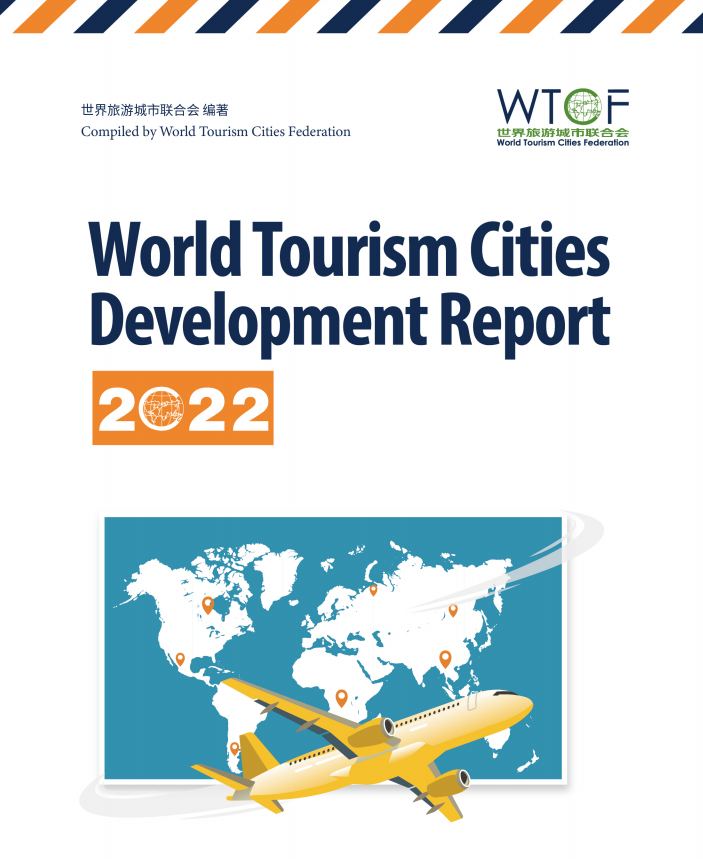
Click here for World Tourism Cities Development Report (2022).pdf
- World's Best Rally Crews to Attend Croatia Rally
- Top-class Exhibitions in Berlin in 2023
- Seychelles Holds First-ever Destination Workshops ...
- Fascinating River Tours: All in Hamburg!
- National Geographic Lists Longmen Grottoes in Luoy...
- Vienna: Mozart, Strauss and DJ Sounds
- Budapest Airport Achieves Top-Level Carbon Accredi...
- HK Expects a Holiday Tourism Boom
- Tui Lakes & Mountains Adds Four Resorts for This S...
- Helsinki Expo and Convention Centre: Growth Driven...
- Join Hands to Create Sustainable Splendor: WTCF We...
- Belfast City Airport Named as Only UK Airport on P...
- American Airlines Unveils Premium Inflight Experie...
- Dubai International Airport Retains Title as World...
- Carnival Glory Returns to Sea After Refurbishments
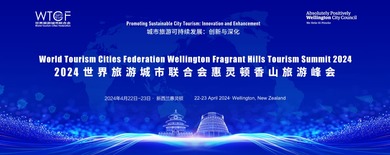
Strategic Partner

Beijing Municipality | Florence | Victoria | Torino | Sevilla | Chinese Friendly International | Innova Tax Free Group | World Travel & Tourism Council | World Tourism Organization | Pacific Asia Travel Association |
Beijing tourism development commission | un | wen wei po | via hansa | tui ag | the beijing news | taikang life insurance co. | skyscanner | sina.com |, shanghai spring international travel service | mastercard | kuoni | kempinski hotels | jtb | okura nikko hotel management co., ltd. | icbc | hong kong airlines | hanatour |, four seasons hotels and resorts | dfs | trip.com | costa crociere s.p.a. | club med | chinese national geography | china unionpay | china travel service | china southern airlines | china news service |, china international travel services | china daily | cyts | cctv | chengdu shuangliu international airport | carnival corporation & plc |, capital airports holding company | caissa | btg international travel & tours | beijing utour | beijing tourism group | beijing gongmei group | beijing capital international airport |, american tours international | american express | america asia travel center inc. | air china | abercrombie & kent | zurich | zhangjiajie | zagreb | yangzhou | xiamen | xi’an | wuhan | wellington | washington | wales | vienna |, veliko tarnovo | vancouver | valletta | toronto | tianjin | thessaloniki | tel aviv-yafo | taiyuan | sofia | athens | shanghai | seoul | sapp oro | sanya |, san francisco | rome | riga | rabat | qingdao | prague | pomorie | plovdiv | pen ang | pa ris-île de france | ottawa | nur-sultan | nicosia | nice | nanjing | mudanjiang | moscow | minsk | milan | marigot | macao | luoyang | los angeles | london | lisbon | kunming | kathmandu | jiaozuo | jakarta | houston | hong kong | helsinki | harbin | hangzhou | hamburg | gwangju | guangzhou | geneve | fez | edinburgh | dublin | dubai | dalian | copenhagen | colombo | chongqing | chengdu | casablanca | cairo | busan | buenos aires | budapest | brussels | boston | berlin | beijing | barcelona | bangkok | bandung | amsterdam | altay | almaty.
- Organizations
- WTCF Promotion Video
- Member List
- Institutional Members
- Sub-committees
- Media Reports
- Legal disclaimer
- Institutional News
- World Conference on Tourism Cooperation and Development
- WTCF World Conference on Tourism Cooperation and Development 2023
- WTCF World Conference on Tourism Cooperation and Development 2022
- WTCF Beijing Fragrant Hills Tourism Summit & World Conference on Tourism Cooperation and Development 2021
- WTCF Academic Achievement
- WTCF Reports
- Fragrant Hills Tourism Summit
- WTCF Changsha Fragrant Hills Tourism Summit 2023
- WTCF Beijing Fragrant Hills Tourism Summit 2021
- WTCF Helsinki Fragrant Hills Tourism Summit 2019
- WTCF Qingdao Fragrant Hills Tourism Summit 2018
- WTCF Los Angeles Fragrant Hills Tourism Summit 2017
- WTCF Chongqing Fragrant Hills Tourism Summit 2016
- WTCF Rabat & Fez Fragrant Hills Tourism Summit 2015
- WTCF Beijing Fragrant Hills Tourism Summit 2014
- WTCF Beijing Fragrant Hills Tourism Summit 2013
- WTCF Beijing Fragrant Hills Tourism Summit 2012

E-Mail Login | Contact Us | Careers | Legal disclaimer
世界旅游城市联合会版权所有 备案号:京ICP备19050424号-1
Our legal counselors: lawyer Song Yunfeng & lawyer He Wen, from Dacheng Law Offices

- In the Spotlight
- Strategy Toolbox
- Trends & Insights
- The Place2Place Podcast
- The ultimate guide to place brand rankings
- Digital Delegate Packages
- WEBINAR: Reputation ROI
- City Nation Place Americas
- City Nation Place UK
- City Nation Place Global
- City Nation Place Australasia
- The Place Brand Portfolio
How smart city innovations can power the future of sustainable tourism destination management
Cities and small municipalities are embracing the smart city movement—the growing practice of connecting traditional infrastructure to “smart” technology to improve public safety, quality of life, and environmental management. Smart city technologies have been adopted across the world, and tourism destinations have begun to realize how these technologies can advance sustainability, accessibility, business innovation, destination branding and marketing, and the preservation of cultural heritage [i] . Recent industry efforts, like DMOcracy, have highlighted the important role technology can play in cultivating a participatory approach to tourism governance and development [ii].
Research at both Harvard and Cornell Universities on the Invisible Burden of Tourism has demonstrated that tracking tourism costs at the utility level can help cities to understand the underlying costs of tourism on their infrastructure. These costs—both social and environmental—often remain “invisible” until the destination hits a breaking point. In fact, destination managers require a new set of tourism indicators that enable ongoing monitoring of tourism’s social and environmental impacts. Indicators should track six key areas:
- Energy and Greenhouse Gas Emissions
- Solid Waste
- Sewage and Wastewater Treatment
- Natural Capital
- Social Capital
Worldwide, Destination Management Organizations (DMOs) are transitioning to new models that are better adapted to today’s tourism issues and destination managers are responsible for the active management of tourism’s impacts. This makes working with local smart city initiatives even more enticing, as these innovations can help destination managers address negative tourism impacts like overcrowding, rising housing costs, the disruption of residents’ way of life, and the degradation of precious natural and cultural heritage.
How do smart cities work?
Think about how smart city solutions function to understand their use [iii]:
- Smart city solutions should improve communities through better decision making or behavior change
- Connected devices (like cell phones) or sensors form a technology network that is used to collect data
- A technology platform or app is created to enable data analysis and reporting
For example, a tourism destination could improve water efficiency by installing sensors that automatically track consumption at individual properties, enabling businesses and residents to detect leaks, irrigate only as necessary, and monitor water quality. Data can be accessed by both customers and the public utility, and such solutions are likely to lower water consumption by 20-30% ii .
These individual solutions can add up to significant impact. A recent global study of more than 150 cities documented that smart cities will be essential to meeting the United Nations Sustainable Development Goals (SDGs)—those cities who have made the most progress on the SDGs also tend to be utilizing advanced technology and data analytics [iv].
Generally, smart city solutions have been led by local government. But cities like Singapore, Amsterdam, Barcelona, Copenhagen, Dubai, London, and New York have integrated private-sector data with government data to enhance public services and economic value for business [v] . These public-private partnerships can also drive innovation—in 2020 New York launched an initiative to “facilitate the development and integration of emerging technologies into public services” that included $1 million of funding and access to city data so that startups could pilot new innovations [vi].
A few critical considerations when implementing smart city initiatives [vii]:
- Think about how data from residents, the private sector, or travelers could enhance destination management.
- Be certain that data privacy is prioritized, and that the initiative invests in security measures.
- Early on, explore how existing data sets can best work together. Can small changes be made that makes implementation of the smart city solution easier?
- Consider how your unit can bring on or collaborate with “knowledge workers” to help with data collection and analysis.
Which destination management issues could benefit from smart city efforts?
Smart city solutions can be developed to address issues in all six Invisible burden categories, which have been shown to impact the ability of municipal governments to operate in the black. Smart city initiatives can create efficiencies related to the Invisible Burden of tourism:
- Building and energy automation
- Tracking water consumption, water quality, and waste disposal
- Enhancing transit
- Crowd management
- Stakeholder engagement, and
- Monitoring and enhancing livability
If you are a destination manager or working in government or industry, it is possible to leverage existing smart city programs to improve transportation options and reduce crowding for tourists. For example, Seoul used big data technology to plan new late-night bus routes with enhanced service, safety, and sustainability and the “night owl” bus service has been consistently rated as one of residents’ favorite public programs [viii] . London made public transport more accessible by launching an app that provides visually impaired travelers audio instructions on how to navigate the London Underground iv . Both of these programs could be utilized to benefit tourism and tourists. In other cities, technology has been deployed to directly address tourism issues—in Cinque Terre and Florence, new travel apps monitor tourist flows in real time using cell phone data, and then suggest the least crowded trails and attractions to visitors [ix].
As destinations launch efforts to manage tourism’s environmental impacts, smart city efforts can be deployed to benefit tourism stakeholders across the city. Initiatives like automating trash collection, electricity pricing, and waste management billing can drive better sustainability outcomes. In Singapore, public-private “urban solar” smart city solutions have scaled renewable energy quickly while decreasing risk for the private sector iv . And, smart technology that combines photography and AI has been deployed worldwide to help hotels and resorts to limit food waste—a large contributor to carbon emissions in the travel sector [x].
It is well worth your team’s time to review the full suite of smart city solutions used to regularly engage residents. This resident data can inform tourism planning, enabling destination managers to take a resident-centered approach. Barcelona and Moscow have both developed digital platforms so that residents can provide feedback on new legislation, make policy proposals, and communicate concerns to city departments more easily ii . And Dubai has implemented a live sentiment capture tool called the Smart Dubai Happiness Meter [xi] . It includes a consolidated dashboard that monitors results across sectors and geographic areas, which has already been applied to some areas that are useful for tourism—for example, the airport [xii].
How can destination managers take advantage of smart city solutions?
The timeliness of moving toward smart destination management is not to be ignored. Such actions can leverage the deep relationship between the travel industry, the city, and the destination management group. Integrating existing smart city efforts with tourism destination planning and management will save time and money, because it utilizes untapped expertise and data already held within local government and the private sector.
To target smart city solutions, destination managers should identify the tourism destination’s most pressing issues. The Sustainable Tourism Asset Management Program (STAMP) at Cornell has collaborated with two destinations to develop systems that monitor and analyze tourism impacts, with excellent results that demonstrate this can be done effectively and efficiently once the system is established. In many cities, the data required by destination managers is already being tracked by government, and teams can work together to enhance knowledge using well-presented data which serves the city, industry and citizens. Cornell’s research team has also developed several tools and a full course, Sustainable Tourism Destination Management , to help destination managers identify socio-cultural and environmental issues and implement innovative sustainability solutions.
About the Author

Related reading
[i] The European Commission. “Leading Examples of Smart Tourism Practices in Europe.” Accessed February 21, 2023. https://smart-tourism-capital.ec.europa.eu/leading-examples-smart-tourism-practices-europe_en .
[ii] Group NAO. “White Paper on DMOcracy.” Group NAO, 2023. https://timefordmocracy.com/ .
[iii] McKinsey Global Institute. “Smart Cities: Digital Solutions for a More Livable Future,” June 2018. http://ceros.mckinsey.com/smart-cities-ex2-v1-online-1-1 .
[iv] ESI Thoughtlab. “Smart City Solutions for a Riskier World,” 2021. https://econsultsolutions.com/smart-city-solutions-for-a-riskier-world-2/ .
[v] World Economic Forum Global Future Council on Cities and Urbanization. “Smart at Scale: Cities to Watch,” August 2020. https://www3.weforum.org/docs/WEF_Smart_at_Scale_Cities_to_Watch_25_Case_Studies_2020.pdf .
[vi] Empire State Development. “New York Smart Cities Innovation Partnership,” March 17, 2020. https://esd.ny.gov/new-york-smart-cities-innovation-partnership .
[vii] Seravalli, Alessandro, Mariaelena Busani, Simone Venturi, Arianna Brutti, Carlo Petrovich, Angelo Frascella, Fabrizio Paolucci, et al. “Towards Smart Cities for Tourism: The POLIS-EYE Project.” In 2022 IEEE International Smart Cities Conference (ISC2) , 1–7, 2022. https://doi.org/10.1109/ISC255366.2022.9922095 .
[viii] Seoulsolution. “Big Data in Seoul’s Transportation Policy: Designing Late Night Bus Routes Based on Big Data.” 서울정책아카이브 Seoul Solution, December 28, 2017. https://seoulsolution.kr/en/content/7595 .
[ix] Hotel Management Network. “Smart City Solutions Are Vital to Combat Overtourism.” Hotel Management Network (blog), July 19, 2022. https://www.hotelmanagement-network.com/comment/smart-city-combat-overtourism/ .
[x] Bourke, Evan. “Food for Thought: How AI Is Reducing Waste in Restaurants.” euronews, December 7, 2022. https://www.euronews.com/next/2022/12/07/food-for-thought-how-ai-is-reducing-waste-in-restaurants .
[xi] Digital Dubai. “Happiness Meter.” Default. Accessed February 24, 2023. https://www.digitaldubai.ae/apps-services/details/happiness-meter .
[xii] Khan, M. Sajid, Mina Woo, Kichan Nam, and Prakash K. Chathoth. “Smart City and Smart Tourism: A Case of Dubai.” Sustainability 9, no. 12 (2017). https://doi.org/10.3390/su9122279 .

Missed the event in person? Don't worry...

The Place Brand Portfolio is City Nation Place's searchable portfolio of Awards case studies from the past five years.
Related content

Keys to the success of cities now

Tackling fragmentation: Uniting your stakeholders through shared storytelling

Place to place collaboration: Finding connections that add value to your place brand
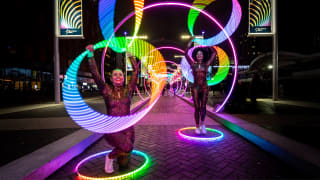
Interactive Art: A catalyst for urban revival and community engagement

Climate Action 101 for place managers

Tips for successful primary research in developing your place brand

Ten tips to engage the next generation in your place brand and marketing strategy
Confirm cancellation.
An error occurred trying to play the stream. Please reload the page and try again.
You can unsubscribe from these emails at any time. For more information on how we process and secure your data, view our privacy policy
By submitting your details you consent to us processing the personal data you have provided in accordance with our privacy policy and terms and conditions
Watch CBS News
Venice becomes first city in the world to charge day trippers a tourist fee to enter
By Megan Cerullo
Edited By Aimee Picchi
April 25, 2024 / 2:58 PM EDT / CBS News
On Thursday, Venice, Italy became the first city in the world to charge day tourists a fee just to visit its historic canals and other attractions on peak days.
The measure is designed to counter over-tourism and mitigate the deleterious impact large crowds can have on some of the city's fragile sites, while also persuading some tourists to visit during less busy times of the year.
The roughly $5.37 fee only applies on 29 days that are deemed to be the busiest between April 25, a holiday in Italy, and July 14, in a trial phase of the reservation-and-fee system.
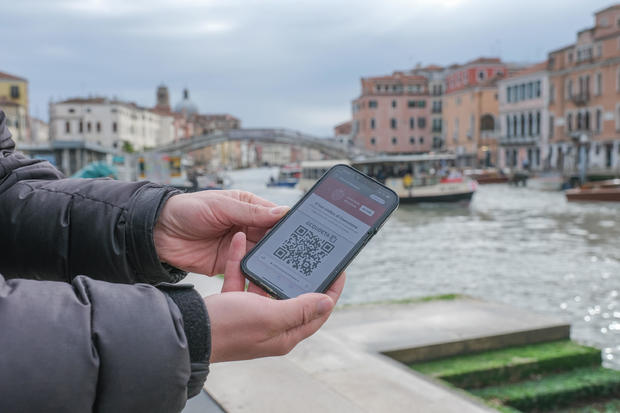
Most people entering the city must register and obtain a QR code, or a ticket for visitors without smartphones, but some tourists are exempt from paying the fee. For instance, visitors who spend the night in a hotel or Airbnb-style accommodation are not subject to the nominal tourist fee. Likewise, residents, people born in Venice, people visiting relatives who are residents, workers, students and visitors under the age of 14 do not have to pay either.
There is no cap on the number of tourists who may reserve a visit on a given day.
In a public video, Luigi Brugnaro, the mayor of Venice, called the new system an "experiment" to protect the city.
"We do it with great humility," he said. In a social media post , he added that the rollout was "going well" and "the atmosphere is relaxed."
Simone Venturini, the tourism councilor of Venice, added, "The whole world would like to visit Venice, and this is an honor for us. But not everyone in the world is able to do so on the exact same day."
However, some residents protested the new policy on Thursday, according to media reports. Some were seen clashing with riot police, while others tried to break through a blockade, CNBC reported .
The fragile lagoon city has a population of roughly 50,000, a sliver of what it was a couple of generations ago. On its busiest days, it can draw nearly as many tourists as it has residents.
A United Nations Educational, Scientific and Cultural Organization (UNESCO) World Heritage property, the city features masterpieces from Giorgione, Titian, Tintoretto and others.
Megan Cerullo is a New York-based reporter for CBS MoneyWatch covering small business, workplace, health care, consumer spending and personal finance topics. She regularly appears on CBS News 24/7 to discuss her reporting.
More from CBS News
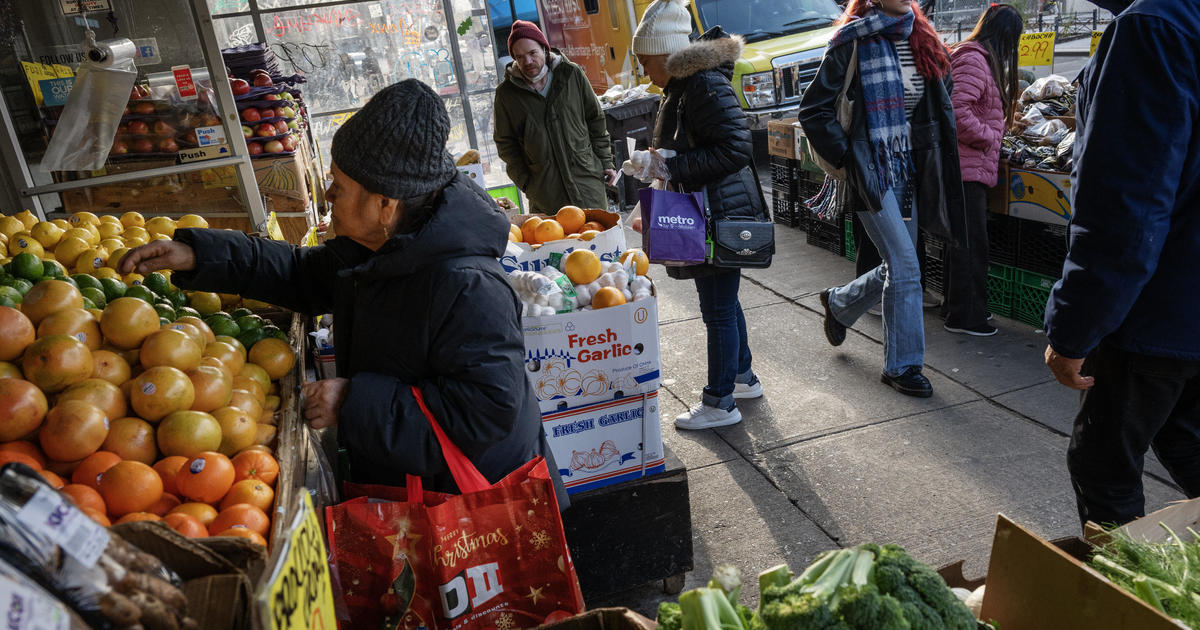
U.S. economic growth slows as consumers tighten their belts

Cost of buying a home in America reaches a new high, Redfin says

Rise in all-cash transactions turbo charge price gains for luxury homes

Bird flu outbreak is driving up egg prices — again
InterNations makes use of JavaScript. Please enable it to have full user experience.
Not a member yet? Join now
Please upgrade your browser now!
You are using Internet Explorer 10 or below. We no longer support this version of your browser.
Visit www.browsehappy.com for an overview of the best free browsers available or contact your IT department to request an update.
- Expat Life Hacks
Expat Tips: Explore the City like a Tourist
Pack Your Camera
We're living in a time when almost everyone has a high-quality camera just hiding in their back pocket. By this we mean the trusty smartphone! When you set out with the mindset of capturing something spectacular that day, your perspective changes. Why not try starting out with the intention of snapping a few great photos of your new home to send back to friends and family? You might start noticing more landmarks and see the beauty in something which you would have simply not recognized if you hadn’t stopped for a moment. You can focus on people, nature, or buildings. Whatever interests you, you’ll start seeing your surroundings through a different lens, in both senses of the word.

I don’t mean this as an insult, more as a friendly piece of advice when it comes to new ways of exploring your city. Sometimes getting off at the wrong stop on public transit or having issues with navigation can lead you to areas which you have never stumbled upon before. Some of my favorite discoveries and “go-to” places to show off when people visit have been discovered as a result of low data and poor navigation skills on my part. However, this turned out to be a blessing in disguise. You pay attention to the little things when you’re trying to find your way to a familiar path, and by default that leads you to appreciating your city even more. You can feel like a newbie in a town you’ve spent so long in, and discovering those hidden treasures is your reward!
Hit the Heights
Another great way to get a fresh perspective on your host town is to head into the clouds. Whether that means conquering a nearby mountain or scaling the tallest skyscraper in the city, the height often gives you a new outlook on things. You’ll be able to recognize certain areas, pinpoint your house, and generally appreciate the beauty of a wide-open view that comes with climbing hundreds of stairs. An added bonus is that rooftop bars and cafés have become increasingly popular, so provided it’s a sunny day, you might be able to enjoy a relaxing drink after the hard work of making it to the top!
Make a Night of It
Things come alive at night, and it can feel like the city is transformed from an ordinary landscape to a glittering mirage of possibilities. Whether you fancy grabbing drinks at a cute bar, trying a new cuisine, or spending a cozy evening watching a theater performance or comedy sketch, these experiences get you out of the house and are guaranteed to leave you feeling content and satisfied that you’ve left your comfort zone.

Get a Room!
If you’re feeling extra fancy and need a change of scenery, you could even book yourself into a hotel room for the night. The novelty of having a bed with fresh sheets, a buffet breakfast, and a mini fridge doesn’t seem to fade with age. Adding a little bit of luxury every now and then can make you feel like a tourist in a new place with an endless list of possibilities waiting for you to explore. Although this might seem extravagant, it does make a world of difference. Suddenly you are surrounded by people excited to wander the streets and see all that your host city has to offer. This feeling is infectious, and I guarantee after a peaceful night’s sleep, you’ll want to get up and go the next day — that is, after you’ve eaten your weight at the unlimited hotel breakfast buffet!
Take a Tour
Your host country is likely to be hiding an abundance of interesting historical information just waiting for you to discover. You might have even been walking past a historically significant site on your way to work without realizing it! That’s why a local tour of your host town might be just what you need. These are offered in most cities across the world now and are an excellent source of background information you can use to wow guests when they come to stay. You also get to get a deeper understanding of where you’re currently living and how generations have lived before you. In general, tours are a great way to reignite your enthusiasm for expat life. Whether it’s a walking, bus, or boat tour, you’re bound to discover some new sites you’ve never seen before and learn some fascinating or funny historical anecdotes.
To see the rest of this ongoing video series with our resident expat expert Lauren, visit our Facebook page. There you can share your feedback with us or even ask for advice — we may just use your question as the starting point for the next video!

About Tegan Francis
Tegan Francis is the Social Media Intern at InterNations. She’s currently living and working in Munich as part of her degree in German and English Communication and enjoys (almost) every aspect of the German lifestyle. If she’s not thinking about where she’s going to try her next plate of Kaiserschmarrn then she’s probably planning her next city break!
Related Articles

Moving with children? Take time to choose the right school!

Top Digital Tools for Expats
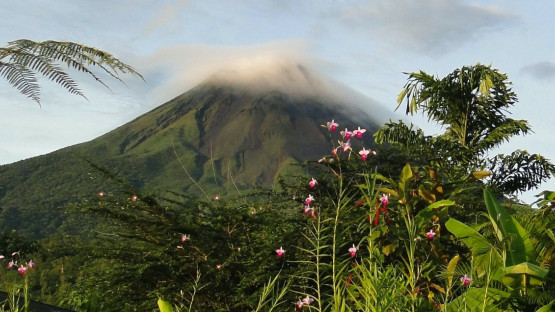
Discover the Top 5 Countries for Adventurous Expats
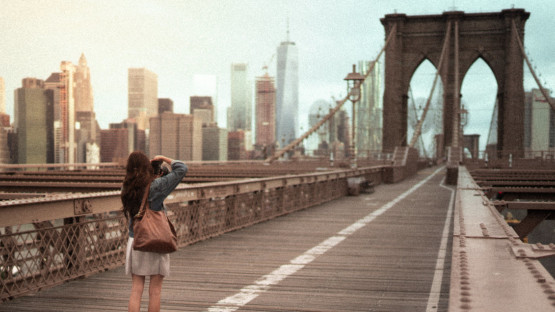
Embracing Local Living: How You Can Quickly Feel at Home in a New Country

Top 10 Tips for Staying Healthy While Abroad

Expat Guides around the World
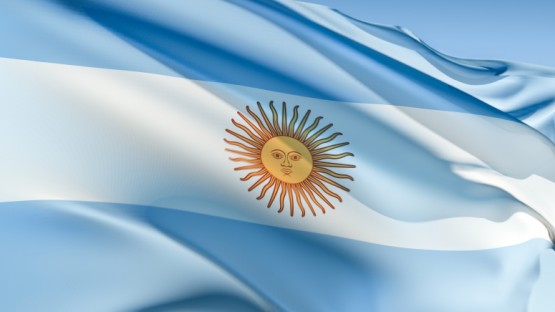
Moving to Argentina
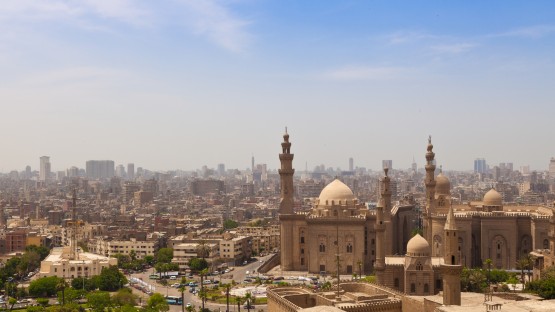
Living in Cairo
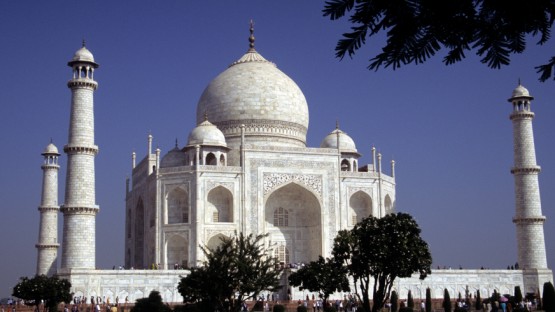
Moving to India
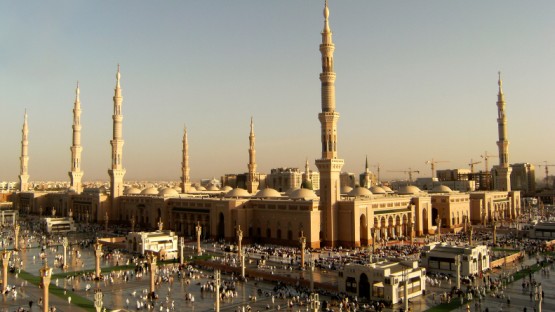
Living in Saudi Arabia
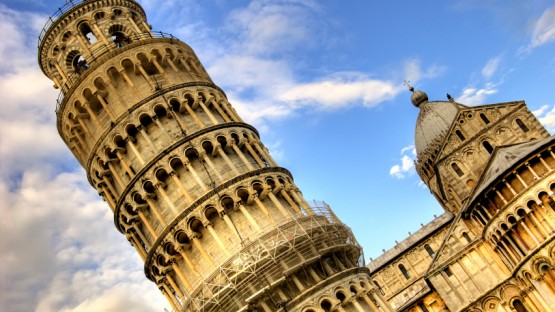
Moving to Italy
Ready to join.
- Skip to main content
- Keyboard shortcuts for audio player
As Venice grapples with overtourism, the city tests a 5-euro fee for day-trippers
Willem Marx
The storied city of Venice, Italy, has begun charging fees for day trips by tourists.
Pay to enter: Venice becomes the first city to implement a tourist ticket system
Venice became the first city in the world on Thursday to introduce a payment system for visitors in an experiment aimed at dissuading tourists from arriving during peak periods.
However, it isn't the only place in Italy that has recently introduced new measures aimed at slowing tourist flows.
Here are some of the initiatives currently in force.
Venice tourist tax
The lagoon city has introduced 5 euros (about $5.35) tickets for day trippers, valid from 8:30 a.m. to 4 p.m. The experiment came into force on April 25, a national holiday in Italy. Tickets will be needed for the following 10 days and thereafter for most weekends until mid-July.
Venice residents, students, workers, and homeowners are exempt from paying or booking a slot. Visitors aged under 14 and tourists with hotel reservations will need to register, but access for them will be free of charge.
Other cities, such as Como, have said they are considering introducing a similar measure but are waiting to see how the Venice initiative works before deciding.
In addition, Venice has said that from June, it will limit the size of tourist groups to 25 people and ban the use of loudspeakers by tour guides.
Florence tourist measure
Florence announced in October that it was banning new short-term residential lets on platforms such as Airbnb in its historic center. It also offered three years of tax breaks to landlords of short-term holiday lets who start offering ordinary leases for residents.
The city's famous museum, the Uffizi, offers discounts to people who arrive before 8.55 a.m. and lower prices off-season. To spread out crowds, it also closes at 10 p.m. once a week.
Cinque Terrer overtourism
The five villages that make up the Cinque Terre on the Italian Riviera regularly get swamped with visitors.
To try to reduce the overcrowding at peak periods, the authority which oversees the area said this week it would charge visitors 15 euros (about $16) to walk the most celebrated coastal path. In addition, the path can only be walked in one direction.
Capri tourism measure
The picturesque small island that lies across the bay from the southern city of Naples has doubled its entry fee, which is automatically added to ferry tickets, to 5 euros. The fee will be charged from April 1 to October 1.
Capri, Ischia, Procida, Lampedusa and Linosa changes
These islands have introduced limits, or outright bans, on cars for non-residents during the main tourist season.
- Top Things To Do
- Art Galleries
- Historic Movie Theatres
- Interlochen Center for the Arts
- Free Things to Do
- Historical Sites
- Lighthouses
- Scavenger Hunt
- Spring Break
- Downtown Traverse City
- Farmer's Markets & U-Picks
- Grand Traverse Commons
- Malls & Shopping Centers
- Spa & Salon
- Cherry Blossom Tours
- Fall Color Tour
- Scenic Drives
- Tours & Exhibits
- Dog Beaches/Pet Friendly
- Beaches Around the Region
- Golf Courses
- Golf Packages
- State Parks
- Trails & Nature Walks
- Green For Good Challenge
- Kayak, Canoe & SUP
- Jet Skiing & Rentals
- Ice Skating Hockey
- Skiing & Snowboarding
- Cross-Country Skiing
- Snowmobiling
- Snowshoeing
- Tubing & Sledding
- Serendipitous Adventure
- Annual Events
- Traverse City Events This Weekend
- Pride Week in Traverse City
- Winter Events
- Traverse City Uncorked
- National Cherry Festival
- Traverse City Film Festival
- International Fireworks Championship
- Holiday Events
- Concerts & Live Music
- Sporting Events & Races
- Wine Events
- Add Your Event
- Places to Eat
- Outdoor Dining
- Eat Like a Local
- Farm to Fork
- Food Trucks
- Kid Friendly
- Restaurant Guide
- Waterfront Dining
- Traverse Wine Coast
- Distilleries
- Traverse City Beer Week
- Man Vs. Draft
- Taprooms & Taverns
- Bed & Breakfast
- Cabins & Cottages
- Condominiums
- Downtown Locations
- Historical Places to Stay
- Hotels & Motels
- Hotels on the Water
- Winter Accommodation Special Offers
- Traverse City Uncorked Lodging Packages
- Pet Friendly
- Vacation Rentals
- Digital Guide Request
- Enewsletter Signup
- Accessibility
- A Very Cherry Passport
- Climate & Weather
- Driving Distances
- General Information
- Benzie County
- Leelanau County
- Gift Certificates
- Ask-a-Nurse
- Virtual Urgent Care
- Local Chambers
- Local News Outlets
- Places of Worship
- Public Safety
- Relocation Information
- Traverse City Pride Week
- Dog-Friendly Activities
- Pet-Friendly Hotels
- Beer & Wine Weekend
- Grand Traverse County
- Explore the Sleeping Bear Dunes
- Outdoor Adventure
- Family Time
- Girlfriend Getaway
- Guy's Weekend
- Lighthouse Tour
- Romantic Getaway
- Personal Wine Tour
- Airport Info
- Printable Maps
- Visitor Center
- Wedding Venues & Lodging
- Wedding Resources
- Getting a License
- Request a Wedding Guide
- Economic Impact
- Hospitality Awards
- Staff Directory
- Full Service Venues
- Unique Venues
- Submit an RFP
- Meetings Resources
- Request Photos
- Meeting Planners Guide Request
- Spouse & Guest Programs
- Connecting & Team Building
- A Meeting in Vacation's Clothing
- Suggested Itineraries
- Group Tour Planner Request
- Tour Planner Assistance Form
- Tour Support & Services
- Media Photo Library
- Press Release Room
- Request Our Assistance
- Traverse City Accolades
- Sign Up for the Meetings Newsletter
- Sports Events
- Wedding Venues
- Wedding Lodging Requests
- FAM On Demand
About Traverse City Tourism
- Privacy Policy
- Members Login
Organized in 1981 as the Traverse City Area Convention and Visitors Bureau, Traverse City Tourism (TCT) is a nonprofit corporation that serves as the area’s official destination organization. Our focused mission is to stimulate economic growth through the attraction of convention business and leisure tourism development.
Traverse City Tourism works to enhance, reinforce, and develop the Traverse City brand, telling the story of our beautiful area to potential visitors through advertising, marketing, tradeshows, publications, sales missions, media relations, and Visitor Center services. Our experienced and knowledgeable team members are motivated by pride in their community and a desire to advance its economic well-being without sacrificing the values that make it such a special place.
Our impact on the economy continues to show strong growth – generating increased spending, employment, and an enhanced quality of life for local residents. Take a look at our Community Report for valuable insights on TCT's contribution to the local tourism community. The latest Economic Impact Report provides data on the tourism industry's overall impact on the local economy.
Plan Your Trip
- © 2024 Traverse City Tourism
- 101 West Grandview Parkway, Traverse City, MI 49684
- T: 231-947-1120 or 1-800-872-8377
- [email protected]
Cookies are used for measurement, ads and optimization. By continuing to use our site you agree to our privacy policy .
Yantar City
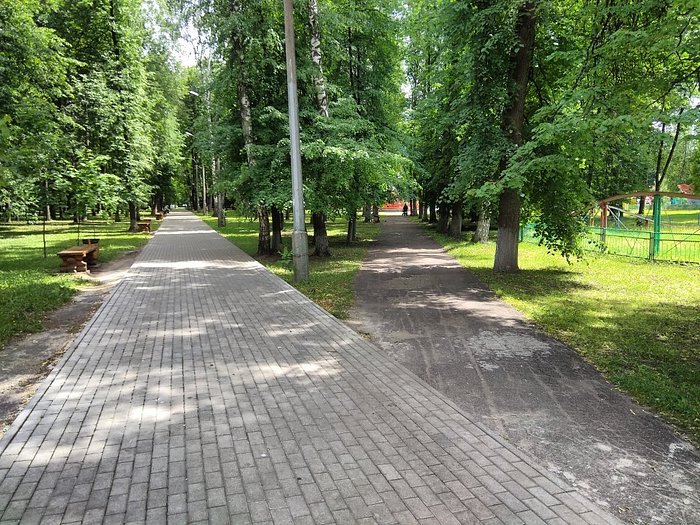
View prices for your travel dates
- Excellent 0
- Very Good 0
- English ( 0 )
Own or manage this property? Claim your listing for free to respond to reviews, update your profile and much more.
YANTAR CITY - Reviews
Morning Rundown: Trump lawyer backs away from absolute immunity argument, China warns against 'downward spiral' in U.S. relations, and key takeaways from the NFL draft
Venice launches world first tourist entrance fee in bid to fight overcrowding
VENICE, Italy — Ancient and beautiful, this city is sometimes referred to as an open air museum — and now visitors to Venice will have to pay an entry fee after the tourist hub on Thursday became the first in the world to introduce a charging system for day-trippers.
In a bid to thin out the crowds that throng to see the canals, bridges and striking architecture during vacation season, day-trippers will have to pay 5 euros ($5.35) to enter the lagoon city on 29 peak days, mostly on weekends, as part of a trial phase until July 14.
Tourists who have booked at least one night at a hotel in the city will be exempt from the charge, as will residents, workers and students in the city. Visitors under age 14 will also be exempt. But like the day-trippers, they will also have to ensure they have registered online and received QR codes.
Those without smartphones will have to go to the city’s Santa Lucia train station to buy tickets.
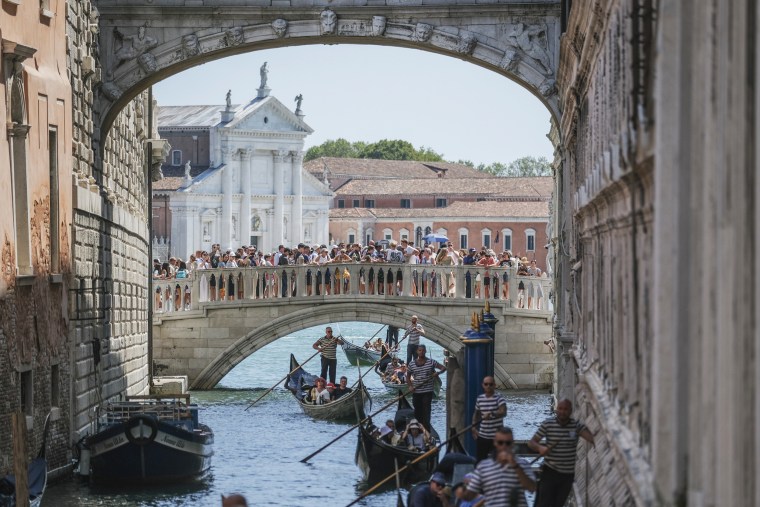
Among the thousands of people lining up at the station for a ticket Thursday was Donna Porter-Mutchler, a tourist from Tennessee, who told NBC News she thought the charge was “a wonderful idea.”
“Venice deserves to be taken care of,” she said. “I think it’s more than worth it. I come here often, and I’ll pay every time.”
While there will be no limits on the number of people who can register, officials hope the fee will put people off on days it applies.
“We are not looking to collect money, tax people or introduce a police state,” Simone Venturini, Venice’s tourism councilor, told NBC News. “We are being democratic about it, but the important message is: ‘Please, if you are a day-tripper, choose another day.’”
While there are no turnstiles at the city’s entrance points to make sure people have passes, inspectors will make random checks and issue fines of 50 to 300 euros to anyone who has failed to register.
Prominent signs across the city and a TV and newspaper advertising campaign have been launched in Italy and some other countries to let people know about it. And with the help of artificial intelligence , Mayor Luigi Brugnaro has also recorded a video message in several languages to inform tourists about the charge.
Officials in the city estimate an average of 50,000 people a day visit Venice, an influx that almost matches the resident population, some of whom are unhappy about the new charge.
“Venice has turned into Disneyland, where tourists are catered more than residents, and charging $5 is not going to stop anyone,” Federica Toninello of the Social Assembly for Housing and the Solidarity Network for Housing in Venice said Thursday. “It’s just propaganda.”
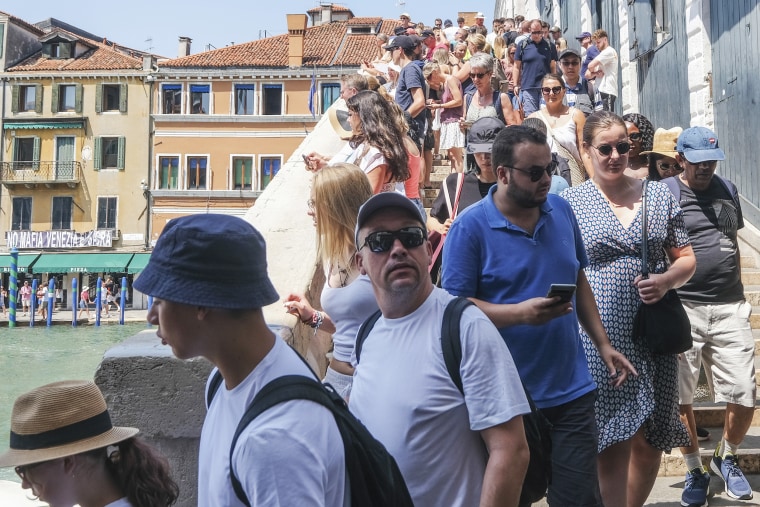
Others, like tourist guide Luisella Romeo, said they were concerned about the use of personal data collected by the new system. “That’s an invasion of privacy. Those details will remain in the system for five years and could be given to third parties, public and private,” she said.
But officials in the city, which narrowly escaped being placed on UNESCO’s “World Heritage in Danger” list last year, in part because the United Nations body decided that it was not addressing concerns that its delicate ecosystem risked being overwhelmed by mass tourism, have insisted that something needed to be done.
Three years ago, large cruise ships were banned from sailing into the Venetian lagoon , and the city has also announced limits on the sizes of tourist groups.
While the charge in Venice is still in its experimental stage, other popular Italian tourism destinations, like Lake Como, which has struggled with overcrowding for years, are watching closely.
Only time will tell whether it ends up dead in the water.
Claudio Lavanga is Rome-based foreign correspondent for NBC News.
- International edition
- Australia edition
- Europe edition

That sinking feeling: why long-suffering Venice is quite right to make tourists pay

The overcrowded city is leading the way with a tax on day trippers. Surely other great European destinations should follow suit
V enice has had enough. It is sinking beneath the twin assaults of tourism and the sea and believes the answer lies in fending off visitors by charging them to enter . It is not alone. Tourism is under attack. Seville is charging for entry to the central Plaza de España. In Paris, the Mona Lisa is so besieged by flashing phones she is about to be banished to a basement . Barcelona graffiti shout , “Tourists go home, refugees welcome.” Amsterdam wants no more coach parties, nor does Rome .
The Venice payment will be complicated . It will apply at specific entry points only to day trippers to the city centre, not hotel guests. It will be a mere five euros and confined to peak times of day over the summer. This will hardly cover the cost of running it. It is a political gesture that is unlikely to stem the tourist flow round the Rialto and St Mark’s Square, let alone leave more room for Venetians to enjoy their city undisturbed by mobs.
As any visitor to Venice knows, large areas of it are empty of Venetians – the main island has lost more than 120,000 residents since the early 1950s. Streets and canals are boarded up. If the Grand Canal is lit up at night it is largely thanks to Airbnb. The tourist district is small and jammed with 40,000 visitors a day . Those who have taken the trouble to reach Venice will not be deterred by five euros.
Venice survived intact largely because its economy collapsed and the city realised its future prosperity depended on its antiquity. As it began to sink in the 1960s, writers such as Jan Morris and James Cameron reflected on their sad delight at being the last generation to see Venice before it disappeared. Now the lagoon has been dammed , but the sea is rising and the iron rods beneath the foundations are rusting and rotting. At vast expense they must be repaired, and it is only tourists who will pay the bills.
In Britain, tourism is the growth industry that gets very little attention and still less praise. Millions of visitors, overseas and domestic, come to London each year, a number that is steadily rising. But its assets have to be defended constantly from planners and developers set on demolition. In addition, there is little tourist destinations can do to expand their “offer”. Their appeal is a mostly a wasting asset. However, at least London has more space for all those tourists than poor Venice, which has just a mile or so of central streets to satisfy 30 million visitors a year .
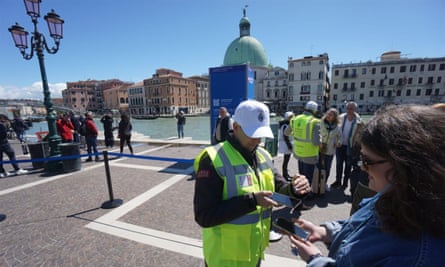
What is for sure is that Europe’s tourism will last as long as it can guard its heritage. Europe is still a treasure trove of humanity’s past, embalmed in historic buildings, cultural quarters and old cities. Its appeal to the outside world has barely begun.
Americans have been the leading tourists in Europe for over half a century, with at least 43% of them having passports. Such documents are held by only 10% of Chinese people and only 7% of Indians . If the numbers of visitors from even just these two countries increase, as they were doing before the Covid-19 pandemic, many of the tourist sites in Europe would have to find new ways to accommodate them.
The task now is not so much to promote the wonders of Europe’s heritage as to conserve and work out how to manage it. Venice is the first such challenge. Some 49,000 remaining Venetian residents cannot possibly pay for the salvation of their city. Thirty million visitors to Venice can. The entry charge is merely a first step.
How soon other cities imitate Venice remains to be seen. In 2018, the Italian town of Bagnoregio, in the Lazio region, parts of which are crumbling downhill, imposed a charge on visitors to raise money for its rescue. It worked. One of the only British towns with the confidence to charge for entry is charming Portmeirion in north Wales. Despite being built by a modern architect in the 20th century, it has become Wales’s most popular attraction .
If I were Venice , I would be shameless. Visiting ancient places is a glorious indulgence. Those who enjoy it should pay accordingly. Good for Venice for showing the way.
Simon Jenkins is a Guardian columnist
Do you have an opinion on the issues raised in this article? If you would like to submit a response of up to 300 words by email to be considered for publication in our letters section, please click here .
- Conservation
- Heritage (Culture)
- Heritage (Travel)
Most viewed
Yantar City

View prices for your travel dates
Reviews we perform checks on reviews. tripadvisor’s approach to reviews before posting, each tripadvisor review goes through an automated tracking system, which collects information, answering the following questions: how, what, where and when. if the system detects something that potentially contradicts our community guidelines , the review is not published. when the system detects a problem, a review may be automatically rejected, sent to the reviewer for validation, or manually reviewed by our team of content specialists, who work 24/7 to maintain the quality of the reviews on our site. our team checks each review posted on the site disputed by our community as not meeting our community guidelines . learn more about our review moderation..
- Excellent 0
- Very Good 0
- English ( 0 )
Own or manage this property? Claim your listing for free to respond to reviews, update your profile and much more.
YANTAR CITY - Reviews, Photos
Yantar City

View prices for your travel dates
- Excellent 0
- Very Good 0
- English ( 0 )
Own or manage this property? Claim your listing for free to respond to reviews, update your profile and much more.
Yantar City - Reviews & Photos
- Election 2024
- Entertainment
- Newsletters
- Photography
- Personal Finance
- AP Investigations
- AP Buyline Personal Finance
- AP Buyline Shopping
- Press Releases
- Israel-Hamas War
- Russia-Ukraine War
- Global elections
- Asia Pacific
- Latin America
- Middle East
- Election Results
- Delegate Tracker
- AP & Elections
- Auto Racing
- 2024 Paris Olympic Games
- Movie reviews
- Book reviews
- Personal finance
- Financial Markets
- Business Highlights
- Financial wellness
- Artificial Intelligence
- Social Media
Venice tests a 5-euro entry fee for day-trippers as the Italian city grapples with overtourism
Under the gaze of the world’s media, the fragile lagoon city of Venice launches a pilot program Thursday to charge day-trippers a 5-euro (around $5.35) entry fee that authorities hope will discourage visitors from arriving on peak days and make the city more liveable for its dwindling residents. (AP Video by Paolo Santalucia)
Stewards check tourists QR code access outside the main train station in Venice, Italy, Thursday, April 25, 2024. The fragile lagoon city of Venice begins a pilot program Thursday to charge daytrippers a 5 euro entry fee that authorities hope will discourage tourists from arriving on peak days. The daytripper tax is being tested on 29 days through July, mostly weekends and holidays starting with Italy’s Liberation Day holiday Thursday. Officials expect some 10,000 people will pay the fee to access the city on the first day, downloading a QR code to prove their payment, while another 70,000 will receive exceptions, for example, because they work in Venice or live in the Veneto region. (AP Photo/Luca Bruno)
- Copy Link copied
Tourists line up to enter at the at St.Mark bell tower in Venice, Italy, Thursday, April 25, 2024. The fragile lagoon city of Venice begins a pilot program Thursday to charge daytrippers a 5 euro entry fee that authorities hope will discourage tourists from arriving on peak days. (AP Photo/Luca Bruno)
A steward shows the QR code access outside the main train station in Venice, Italy, Thursday, April 25, 2024. The fragile lagoon city of Venice begins a pilot program Thursday to charge daytrippers a 5 euro entry fee that authorities hope will discourage tourists from arriving on peak days. The daytripper tax is being tested on 29 days through July, mostly weekends and holidays starting with Italy’s Liberation Day holiday Thursday. Officials expect some 10,000 people will pay the fee to access the city on the first day, downloading a QR code to prove their payment, while another 70,000 will receive exceptions, for example, because they work in Venice or live in the Veneto region. (AP Photo/Luca Bruno)
Stewards check a tourist QR code access outside the main train station in Venice, Italy, Thursday, April 25, 2024. The fragile lagoon city of Venice begins a pilot program Thursday to charge daytrippers a 5 euro entry fee that authorities hope will discourage tourists from arriving on peak days. The daytripper tax is being tested on 29 days through July, mostly weekends and holidays starting with Italy’s Liberation Day holiday Thursday. Officials expect some 10,000 people will pay the fee to access the city on the first day, downloading a QR code to prove their payment, while another 70,000 will receive exceptions, for example, because they work in Venice or live in the Veneto region. (AP Photo/Luca Bruno)
Citizens and activists confront police during a demonstration against Venice Tax Fee in Venice, Italy, Thursday, April 25, 2024. The fragile lagoon city of Venice begins a pilot program Thursday to charge daytrippers a 5 euro entry fee that authorities hope will discourage tourists from arriving on peak days. The daytripper tax is being tested on 29 days through July, mostly weekends and holidays starting with Italy’s Liberation Day holiday Thursday. Officials expect some 10,000 people will pay the fee to access the city on the first day, downloading a QR code to prove their payment, while another 70,000 will receive exceptions, for example, because they work in Venice or live in the Veneto region. (AP Photo/Luca Bruno)
Tourists arrive outside the main train station in Venice, Italy, Wednesday, April 24, 2024. The lagoon city of Venice begins a pilot program Thursday, April 25, 2024 to charge daytrippers a 5 euro entry fee that authorities hope will discourage tourists from arriving on peak days. Officials expect some 10,000 people will pay the fee to access the city on the first day, downloading a QR code to prove their payment. (AP Photo/Luca Bruno)
Tourists enjoy a ride on gondolas in Venice, Italy, Thursday, April 25, 2024. The fragile lagoon city of Venice begins a pilot program Thursday to charge daytrippers a 5 euro entry fee that authorities hope will discourage tourists from arriving on peak days. (AP Photo/Luca Bruno)
Marco Bettini, director of Venis Informatics System, gestures as he talks to reporters at the police Venice control room, in Venice, Italy, Wednesday, April 24, 2024. The lagoon city of Venice begins a pilot program Thursday, April 25, 2024 to charge daytrippers a 5 euro entry fee that authorities hope will discourage tourists from arriving on peak days. Officials expect some 10,000 people will pay the fee to access the city on the first day, downloading a QR code to prove their payment. (AP Photo/Luca Bruno)
Workers prepare the tourist tax cashier desks outside the main train station in Venice, Italy, Wednesday, April 24, 2024. The lagoon city of Venice begins a pilot program Thursday, April 25, 2024 to charge daytrippers a 5 euro entry fee that authorities hope will discourage tourists from arriving on peak days. Officials expect some 10,000 people will pay the fee to access the city on the first day, downloading a QR code to prove their payment. (AP Photo/Luca Bruno)
Venice councillor Simone Venturini speaks with reporters in front of a tourist tax totem in Venice, Italy, Wednesday, April 24, 2024. The lagoon city of Venice begins a pilot program Thursday, April 25, 2024 to charge daytrippers a 5 euro entry fee that authorities hope will discourage tourists from arriving on peak days. Officials expect some 10,000 people will pay the fee to access the city on the first day, downloading a QR code to prove their payment. (AP Photo/Luca Bruno)
Tourists enjoy a sunny day at St.Mark square in Venice, Italy, Thursday, April 25, 2024. The fragile lagoon city of Venice begins a pilot program Thursday to charge daytrippers a 5 euro entry fee that authorities hope will discourage tourists from arriving on peak days. (AP Photo/Luca Bruno)
A citizen shows a ticket with the writing ‘Veniceland’ during a protest against Venice Tax Fee in Venice, Italy, Thursday, April 25, 2024. The fragile lagoon city of Venice begins a pilot program Thursday to charge daytrippers a 5 euro entry fee that authorities hope will discourage tourists from arriving on peak days. The daytripper tax is being tested on 29 days through July, mostly weekends and holidays starting with Italy’s Liberation Day holiday Thursday. Officials expect some 10,000 people will pay the fee to access the city on the first day, downloading a QR code to prove their payment, while another 70,000 will receive exceptions, for example, because they work in Venice or live in the Veneto region. (AP Photo/Luca Bruno)
Citizens and activists stage a protest against Venice Tax Fee in Venice, Italy, Thursday, April 25, 2024. The fragile lagoon city of Venice begins a pilot program Thursday to charge daytrippers a 5 euro entry fee that authorities hope will discourage tourists from arriving on peak days. The daytripper tax is being tested on 29 days through July, mostly weekends and holidays starting with Italy’s Liberation Day holiday Thursday. Officials expect some 10,000 people will pay the fee to access the city on the first day, downloading a QR code to prove their payment, while another 70,000 will receive exceptions, for example, because they work in Venice or live in the Veneto region. (AP Photo/Luca Bruno)
VENICE, Italy (AP) — Under the gaze of the world’s media, the fragile lagoon city of Venice launched a pilot program Thursday to charge day-trippers a 5-euro ($5.35) entry fee that authorities hope will discourage visitors from arriving on peak days and make the city more livable for its dwindling residents.
Visitors arriving at Venice’s main train station were greeted with large signs listing the 29 dates through July of the plan’s test phase that also designated separate entrances for tourists, and residents, students and workers.
“We need to find a new balance between the tourists and residents,’’ said Simone Venturini, the city’s top tourism official. “We need to safeguard the spaces of the residents, of course, and we need to discourage the arrival of day-trippers on some particular days.”
Not all residents, however, are persuaded of the efficacy of the new system in dissuading mass tourism , insisting that only a resurgence in the population will restore balance to a city where narrow alleyways and water buses are often clogged with tourists.
Hundreds of Venetians protested against the program, marching festively though the city’s main bus terminal behind banners reading “No to Tickets, Yes to Services and Housing.” Protesters scuffled briefly with police with riot gear who blocked them from entering the city, before changing course and entering over another bridge escorted by plainclothes police officers. The demonstration wrapped up peacefully in a piazza.
Tourists arriving at the main station encountered almost as many journalists as stewards on hand to politely guide anyone unaware of the new requirements through the process of downloading the QR code to pay the fee.
Arianna Cecilia, a tourist from Rome visiting Venice for the first time, said she thought it was “strange” to have to pay to enter a city in her native country, and be funneled through separate entrance ways for tourists. She and her boyfriend were staying in nearby Treviso, and so downloaded the QR code as required. But she was still caught off-guard while soaking in her first view ever of Venice’s canals by the sight of the entrance signs and her boyfriend telling her to get out the ticket.
On the other side of the entrance ways, workers in yellow vests carried out random checks at the train station. Transgressors face fines of 50 to 300 euros ($53 to $320), but officials said “common sense” was being applied for the launch.
The requirement applies only for people arriving between 8:30 a.m. and 4 p.m. Outside of those hours, access is free and unchecked.
Tourists take pictures at the St. Mark square in Venice, Italy, Wednesday, April 24, 2024. (AP Photo/Luca Bruno)
Venice has long suffered under the pressure of overtourism, and officials hope that the pilot project can help provide more exact figures to better manage the phenomenon.
The city can track the number of hotel visitors, which last year numbered 4.6 million and is down 16% from pre-pandemic highs. But the number of day visitors, which make up the majority of the crowds in Venice, could only be estimated until recently.
A Smart Control Room set up during the pandemic has been tracking arrivals from cellphone data, roughly confirming pre-pandemic estimates of 25 million to 30 million arrivals a year, said Michele Zuin, the city’s top economic official. That includes both day-trippers and overnight guests.
But Zuin said the data is incomplete.
“It’s clear we will get more reliable data from the contribution” being paid by day-trippers, he said.
Venturini said the city is strained when the number of day-trippers reaches 30,000 to 40,000. On peak days, local police set up one-way traffic for pedestrians to keep the crowds moving.
Residents opposing the day-tripper tax insist that the solution to Venice’s woes are to boost the resident population and the services they need, limiting short-term rentals to make available more housing and attract families back from the mainland.
Last year, Venice passed a telling milestone when the number of tourist beds exceeded for the first time the number of official residents, which is now below 50,000 in the historic center with its picturesque canals.
“Putting a ticket to enter a city will not decrease not even by one single unit the number of visitors that are coming,’’ said Tommaso Cacciari, an activist who organized a protest Thursday against the measure.
“You pay a ticket to take the metro, to go to a museum, an amusement park. You don’t pay a ticket to enter a city. This is the last symbolic step of a project of an idea of this municipal administration to kick residents out of Venice,” he said.
Venice Mayor Luigi Brugnaro declared the launch day, coinciding with an Italian holiday, a success, registering 15,700 paying visitors, 50% more than anticipated.
More than 97,000 others had downloaded a QR code denoting an exemption, including to work in Venice or as a resident of the Veneto region. Hotels in Venice, including in mainland districts like Marghera or Mestre, provided a QR code for visitors to attest to their stay, which includes a hotel tax — accounting for 40,000 of those.
Venturini, the tourist official, said that interest in Venice’s pilot program has been keen from other places suffering from mass tourism, including other Italian art cities, and municipalities abroad such as Barcelona, Spain, and Amsterdam.
But Marina Rodino, who has lived in Venice for 30 years, doesn’t see the fee as the cure-all. Neighboring apartments in her residential building near the famed Rialto Bridge once inhabited by families are now short-term apartment rentals.
The corner butcher shop closed. Yet she noted that the new entrance fee requirement will still allow young people to flood the city in the evening for the traditional aperitivo, which can grow rowdy.
She was passing out mock European Union passports for “Venice, Open City,” underlining the irony of the new system, and challenging its legal standing with citations from the Italian Constitution guaranteeing its citizens the right to “move or reside freely in any part of the national territory.”
“This is not a natural oasis. This is not a museum. It is not Pompeii. It is a city, where we need to fight so the houses are inhabited by families, and stores reopen. That is what would counter this wild tourism,’’ Rodino said.

IMAGES
VIDEO
COMMENTS
According to UN Tourism, Urban Tourism is "a type of tourism activity which takes place in an urban space with its inherent attributes characterized by non-agricultural based economy such as administration, manufacturing, trade and services and by being nodal points of transport. Urban/city destinations offer a broad and heterogeneous range of cultural, architectural, technological, social and ...
Urban tourism, or also called city tourism, is a form of tourism that takes place in the large human agglomerations, usually in the main cities or urban areas of each country. Definition
How to explore and visit a city. Visit a local market. Sleep before you arrive. Learn basic words and phrases. People watching. Embrace your inner tourist. Talk to the locals. Take a cooking class. Eat where the locals eat.
Lisbon. #27 in Best Cities in the World to Visit. Lisbon beckons to leisure travelers and digital nomads alike with its incredible vistas, colorful ceramic tiles and rich cultural heritage. Top ...
City tourism is one of the fastest growing travel segments worldwide [18] and the changing nature of city tourism becomes increasingly apparent in many cities. Facilitated by mobile access to information, tourists are increasingly seeking, finding and consuming 'local experiences' and the boundaries between tourists and residents become increasingly blurred.
10. Gandikap. 11. Papa Lounge Bar. 12. Karaoke Bar. What are the top attractions to visit in Elektrostal? Things to Do in Elektrostal, Russia: See Tripadvisor's 801 traveler reviews and photos of Elektrostal tourist attractions. Find what to do today, this weekend, or in May.
Austin. #17 in Best U.S. Cities to Visit. With its lively bar scene and legendary live music options, Austin is the perfect place to let loose - but in a way that is uniquely Texan. Dance halls ...
Paris and Istanbul both made significant gains between 2017 and 2019 with 20.6% and 37.2% growth in visitors respectively: Note that only one North American city, New York City, is found in this top 10. As well, Asian cities account for half of the leading group, with two of the top 10 cities are located in China.
Explore Elektrostal' with Trip.com's comprehensive travel guide. Discover the city's top attractions, best local dishes, essential travel tips, and hidden gems. Get insights from real travelers' reviews and make the most of your visit.
More Africa & Middle East Destinations. Plan your trip with free itineraries, guides, activities and maps. Create your personal travel guide with full information on all attractions, shopping and more.
The Los Angeles City Tourism Department (CTD) is responsible for tourism policy, strategic planning for tourism and oversight of external partnerships for the purpose of increasing the competitiveness of Los Angeles as a convention and tourist destination. CTD helps the City maximize the economic benefits derived from out-of-town visitors whose ...
This is a list of top 100 cities ranked by the number of international visitors, including all international arrivals by land, air, and sea, for tourist or business purposes.The consulting firm Euromonitor and the financial services corporation Mastercard define the concept of the foreign visitor differently thus their respective rankings differ. ...
40 Facts About Elektrostal. Elektrostal is a vibrant city located in the Moscow Oblast region of Russia. With a rich history, stunning architecture, and a thriving community, Elektrostal is a city that has much to offer. Whether you are a history buff, nature enthusiast, or simply curious about different cultures, Elektrostal is sure to ...
In 1938, it was granted town status. [citation needed]Administrative and municipal status. Within the framework of administrative divisions, it is incorporated as Elektrostal City Under Oblast Jurisdiction—an administrative unit with the status equal to that of the districts. As a municipal division, Elektrostal City Under Oblast Jurisdiction is incorporated as Elektrostal Urban Okrug.
1. Paris: For the second year in a row, the French capital has been named the world's most attractive tourism destination in the Top 100 City Destinations Index 2022. 2. Dubai: In second place ...
World Tourism Cities Development Report (2022) Publish Time:2023-09-02 22:14:03 Source: WTCF. 【Introduction】:The World Tourism Cities Development Report (2022) focuses on 100 sample cities worldwide. To make a scientific and comprehensive analysis of the sample cities, the report sets up 32 sub-indices and 61 component indicators from ...
City Pass. City Pass is a company that makes your visit to 11 major U.S. destinations easier by bundling prepaid admissions to local top attractions. It costs half of what it would cost to purchase the same admission ticket separately and you get to skip long ticket lines. City Pass offers bundles for Atlanta, Georgia; Boston, Massachusetts ...
Integrating existing smart city efforts with tourism destination planning and management will save time and money, because it utilizes untapped expertise and data already held within local government and the private sector. To target smart city solutions, destination managers should identify the tourism destination's most pressing issues.
Garisenda, Italy's other leaning tower 05:40. On Thursday, Venice, Italy became the first city in the world to charge day tourists a fee just to visit its historic canals and other attractions on ...
Expat Tips: Explore the City like a Tourist. Once the excitement of a new job, a new neighborhood, and a new grocery shopping list wears off, it's easy for your "go get 'em" attitude to dwindle as the expat blues sets in. A top tip to combat these feelings and reignite your sense of adventure is to explore your city like a tourist.
As Venice grapples with overtourism, the city tests a 5-euro fee for day-trippers The storied city of Venice, Italy, has begun charging fees for day trips by tourists.
Venice is first city in the world to introduce 'pay to enter' system to curb over-tourism Venice introduced a payment system that charges tourists older than 14 an entry fee into the Italian city ...
Venice tourist tax. The lagoon city has introduced 5 euros (about $5.35) tickets for day trippers, valid from 8:30 a.m. to 4 p.m. The experiment came into force on April 25, a national holiday in ...
About Traverse City Tourism. Organized in 1981 as the Traverse City Area Convention and Visitors Bureau, Traverse City Tourism (TCT) is a nonprofit corporation that serves as the area's official destination organization. Our focused mission is to stimulate economic growth through the attraction of convention business and leisure tourism ...
Yantar City, Elektrostal: See traveler reviews, candid photos, and great deals for Yantar City at Tripadvisor.
VENICE, Italy — Ancient and beautiful, this city is sometimes referred to as an open air museum — and now visitors to Venice will have to pay an entry fee after the tourist hub on Thursday ...
As any visitor to Venice knows, large areas of it are empty of Venetians - the main island has lost more than 120,000 residents since the early 1950s. Streets and canals are boarded up. If the ...
Are there any historical sites close to Yantar City? Many travellers enjoy visiting Summery House A.I. Morozova (5.5 miles) and Shirokov House (7.2 miles). See all nearby attractions. Yantar City, Elektrostal: See traveller reviews, candid photos, and great deals for Yantar City at Tripadvisor.
Which popular attractions are close to Yantar City? Nearby attractions include Epiphany Cathedral (6.5 km), Tikhvin Temple (6.5 km), and Patriarch Pimen Monument (6.4 km). See all nearby attractions.
The fragile lagoon city of Venice has launched a pilot program to charge day-trippers a 5-euro or $5.35 entry fee that authorities hope will discourage visitors from arriving on peak days and make the city more livable for its dwindling ... Stewards check a tourist QR code access outside the main train station in Venice, Italy, Thursday, April ...